|

HOME |
ABOUT | INDEX |
NEWS |
FACEBOOK |
CONTACT
MARDI GRAS
Laissez Le Bontemps
Roulez
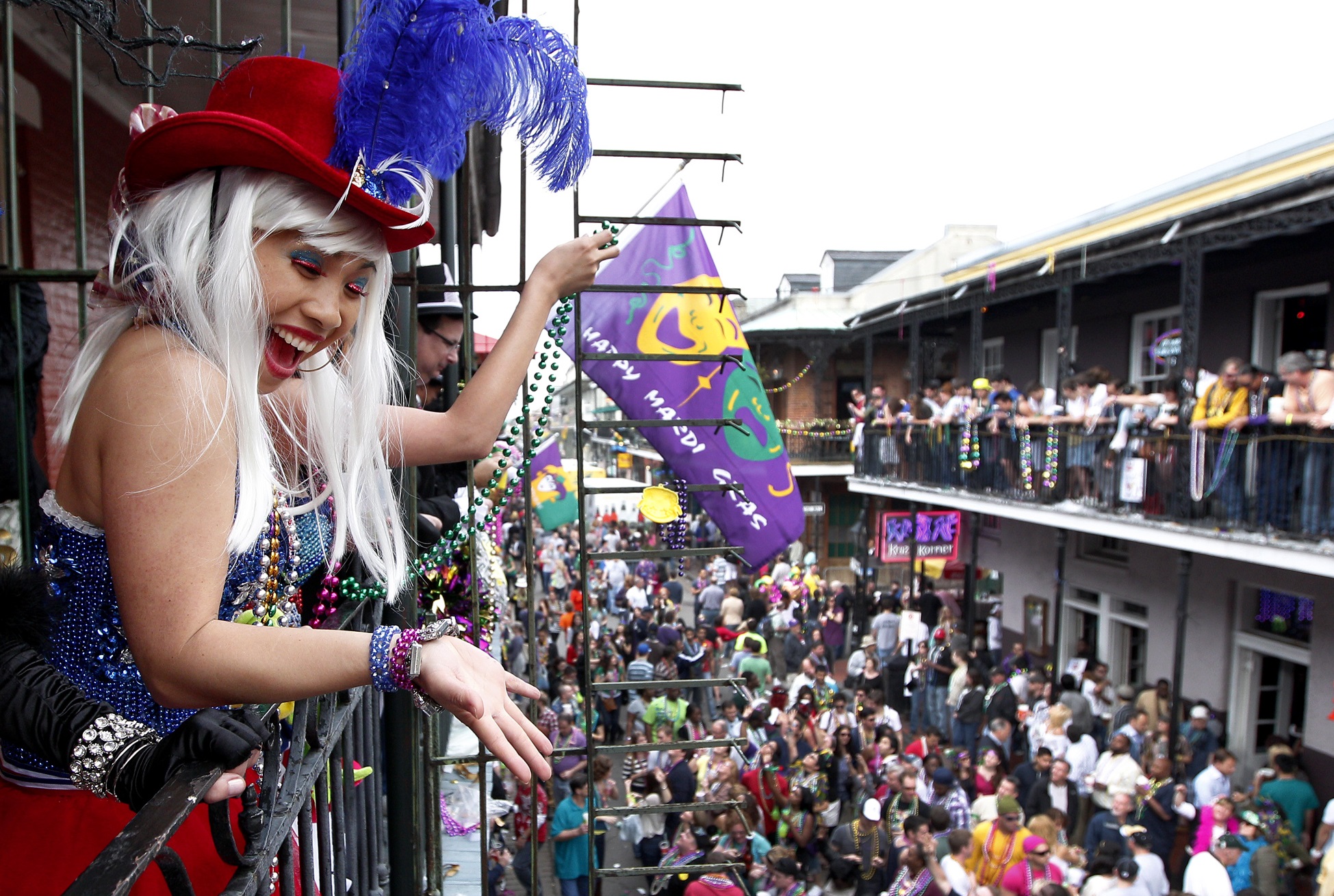

LGBTQ Mardi Gras
New Orleans: Home of Mardi
Gras
Guide to LGBTQ Mardi Gras
Travel Guide: New Orleans Gay Mardi Gras
Gay
Mardi Gras History
About Mardi Gras
Video: Celebrating Mardi Gras in New Orleans
Celebrating Mardi Gras
Mardi Gras Traditions

Gay Mardi Gras
Celebrating Fat Tuesday and the LGBTQ Community
Gay Mardi
Gras is without a doubt the most outrageous gay and
lesbian event in New Orleans, second only to the annual
Southern Decadence Weekend Celebration in the number of
gay and lesbian revelers. It takes place in the lower
French Quarter. This is where the epicenter of the Gay
New Orleans community is located at the corner of
Bourbon and St. Ann Streets, anchored by the city's
largest gay nightclub, The Bourbon Pub / Parade.
Tradition dictates that the official Mardi Gras season
begins on January 6th, or Twelfth Night. The duration is
determined by the Church calendar, and runs until the
beginning of Lent, which is Ash Wednesday. The climax is
"Fat Tuesday" (or Mardi Gras Day), the Tuesday before
Ash Wednesday. And Ash Wednesday is always 46 days
before Easter Sunday. Finally, Easter Sunday is the
first Sunday after the first full moon following the
first day of Spring. The entire season can last as long
as two months.
One of the
most popular celebratory phrases you will hear in the
French Quarter is, "Laissez le bontemps roulez!"
translated into English, it means, "Let the good times
roll!"
The
outrageous activities associated with Mardi Gras easily
lend themselves to queer celebration. Almost from the
beginning, the LGBTQ community embraced the festivities,
symbols, motifs, and flamboyant spirit of Mardi Gras.
LGBTQ Pride parades often resemble Mardi Gras parades. Events
commonly referred to as the Gay Mardi Gras include:
--Mardi
Gras, in New Orleans, Louisiana
--Southern Decadence, in New Orleans, Louisiana
--Carnival, in Rio De Janeiro, Brazil
--Sydney Mardi Gras, in Sydney, Australia (formerly
known as Sydney Gay and Lesbian Mardi Gras)
LGBTQ Mardi Gras
New Orleans: Home of Mardi
Gras
Guide to LGBTQ Mardi Gras
Travel Guide: New Orleans Gay Mardi Gras
Gay
Mardi Gras History
About Mardi Gras
Video: Celebrating Mardi Gras in New Orleans
Celebrating Mardi Gras
Mardi Gras Traditions
Celebrating Pride in New Orleans
Southern Decadence: New Orleans's Massive Queer Party
Pride in New Orleans
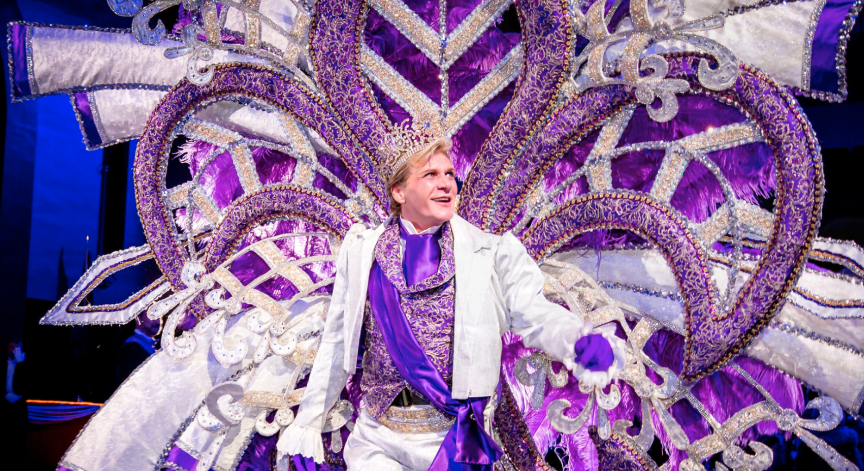
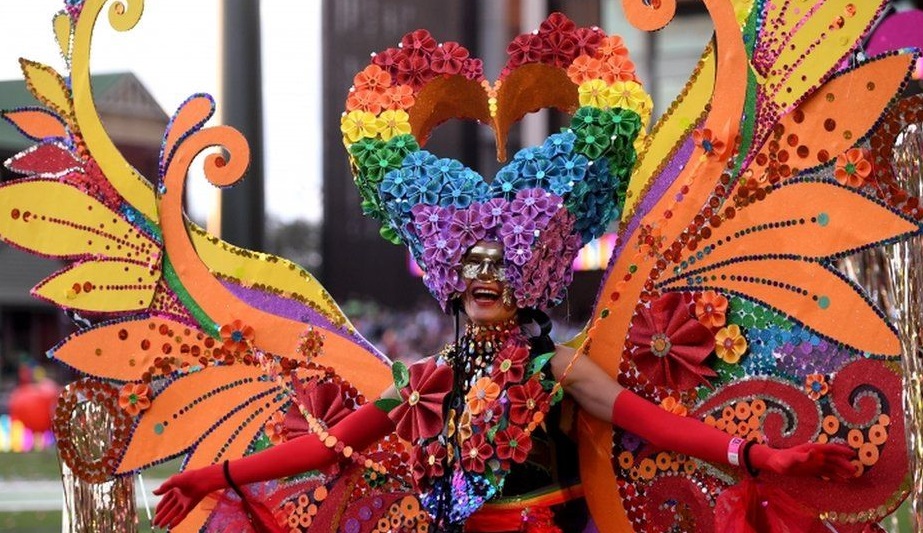
Celebrating
Mardi Gras
Beads and Bling
Mardi Gras
is about music, parades, parties, picnics, floats and
excitement. It's one big rowdy, raucous holiday in New
Orleans!
Revelers know to wear costumes or at least dress in
purple, green, and gold, and adorn themselves with long
beads caught from the floats of previous parades. Parade
goers will sit on the ground, throw balls, play music,
eat great food and watch the crowds walk by between
parades. On Mardi Gras day, the majority of
non-essential businesses are shut down because of the
celebration.
To engage in the Mardi Gras festivities is to collect
beads, cups, doubloons, trinkets, and all manner of
bling (referred to as "throws"). In fact, every
year, over 25 million pounds of Mardi Gras beads are
thrown from floats. You'll see a lot of colorful masks
and outrageous costumes worn by revelers. Your
feet will not stay still while you watch (and listen to)
the jazz bands marching in the street playing "When the
Saints Go Marching In." You will not be able to
resist the Cajun and Creole cuisine, including crawfish,
jambalaya, gumbo, beignets, and king cake (a Mardi Gras
tradition).
Historical Notes: Mardi Gras
Popular Mardi Gras Traditions
Mardi Gras Traditions You Need to Know About
Inside the Undiscovered Gay Mardi Gras
Video: Fabulous Gay Mardi Gras
Vintage Gay Mardi Gras Images
About Sydney Gay and Lesbian Mardi Gras
Homepage: Sydney
Gay and Lesbian Mardi Gras
Sydney: Welcome to Gay and Lesbian Mardi Gras
Pride in New Orleans
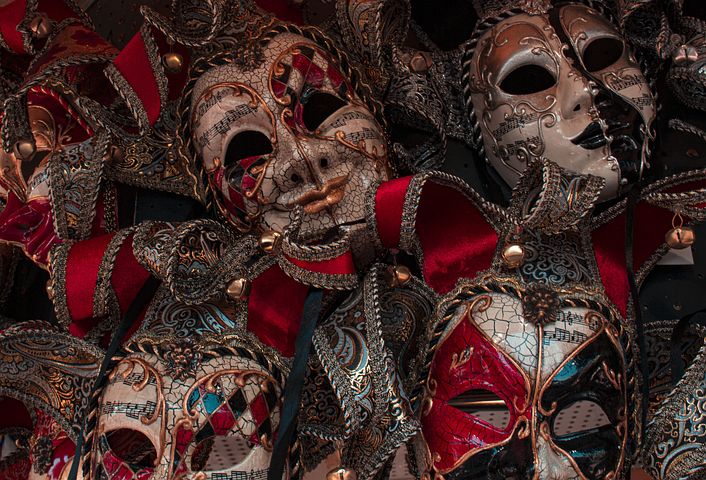
Pagan Roots
Mardi Gras
is a tradition that dates back thousands of years to
pagan celebrations of spring and fertility, including
the raucous Roman festivals of Bacchanalia, Saturnalia,
and Lupercalia.
When
Christianity arrived in Rome, religious leaders decided
to incorporate these popular local traditions into the
new faith, an easier task than abolishing them
altogether. As a result, the excess and debauchery of
the Mardi Gras season became a prelude to Lent, the 40
days of fasting and penance between Ash Wednesday and
Easter Sunday.
Mardi Gras
is part of an overall "carnival" celebration, another
common name for the pre-Lenten festivities that follow
Fat Tuesday and lead up to Easter Sunday. The word
carnival in Medieval Latin is carnelevarium,
which means to take away, remove, or give up meat, from
the word carnem for meat.
Historical Notes: Mardi Gras
Popular Mardi Gras Traditions
Mardi Gras Traditions You Need to Know About
Inside the Undiscovered Gay Mardi Gras
Video: Fabulous Gay Mardi Gras
Vintage Gay Mardi Gras Images
About Sydney Gay and Lesbian Mardi Gras
Homepage: Sydney
Gay and Lesbian Mardi Gras
Sydney: Welcome to Gay and Lesbian Mardi Gras
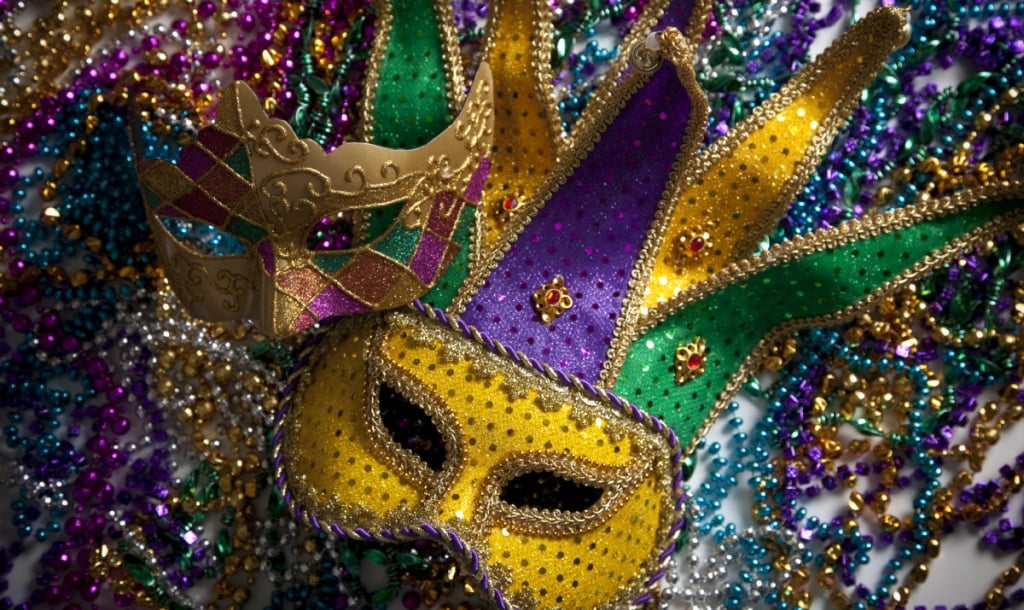
Costume Party
Mardi Gras, as a celebration of life before the
more-somber occasion of Ash Wednesday, nearly always
involves the use of masks and costumes by its
participants, and the most popular celebratory colors
are purple, green, and gold. In New Orleans, for
example, these often take the shape of fairies, animals,
people from myths, or various Medieval costumes as well
as clowns and Indians (Native Americans). However, many
costumes today are simply elaborate creations of colored
feathers and capes. Unlike Halloween costumery, Mardi
Gras costumes are not usually associated with such
things as zombies, mummies, bats, blood, and the like,
though death may be a theme in some. The Venice
tradition has brought golden masks into the usual round
of costumes.

Show Us Your Tits
Women exposing their breasts during Mardi Gras in New
Orleans, has been documented since 1889, when the
Times-Democrat decried the "degree of immodesty
exhibited by nearly all female masqueraders seen on the
streets." The practice was mostly limited to tourists in
the upper Bourbon Street area. In the crowded streets of
the French Quarter, generally avoided by locals on Mardi
Gras Day, flashers on balconies cause crowds to quickly
form.
In the last decades of the 20th century, the rise in
producing commercial videotapes catering to voyeurs
helped encourage a tradition of women baring their
breasts in exchange for beads and trinkets. Social
scientists studying "ritual disrobement" found, at the
1991 Mardi Gras event, 1,200 instances of women exposing
their breasts.
Historical Notes: Mardi Gras
Popular Mardi Gras Traditions
Mardi Gras Traditions You Need to Know About
Inside the Undiscovered Gay Mardi Gras
Video: Fabulous Gay Mardi Gras
Vintage Gay Mardi Gras Images
About Sydney Gay and Lesbian Mardi Gras
Homepage: Sydney
Gay and Lesbian Mardi Gras
Sydney: Welcome to Gay and Lesbian Mardi Gras
Southern Decadence: New Orleans's Massive Queer Party
Pride in New Orleans
Gay Mardi Gras Tradition
While the
first official gay Carnival krewe, the Krewe of Yuga,
was formed in the late 1950s, “Gay Mardi Gras” had been
going on underground way before then. As a spoof of
traditional Mardi Gras krewes, the Yuga ball featured a
glittering presentation of royalty, including a Queen,
King, Captain, debutantes and maids. Though no longer
active, Yuga gave birth to other gay Carnival krewes,
including the Krewe of Petronius and the Krewe of Amon-Ra,
both of which are still active.
While on the surface Mardi Gras appears to be no more
than a party, many say Gay Mardi Gras helped usher in
the Gay Rights Movement in the United States. Today it
remains an important symbol of pride for the community
and its allies.
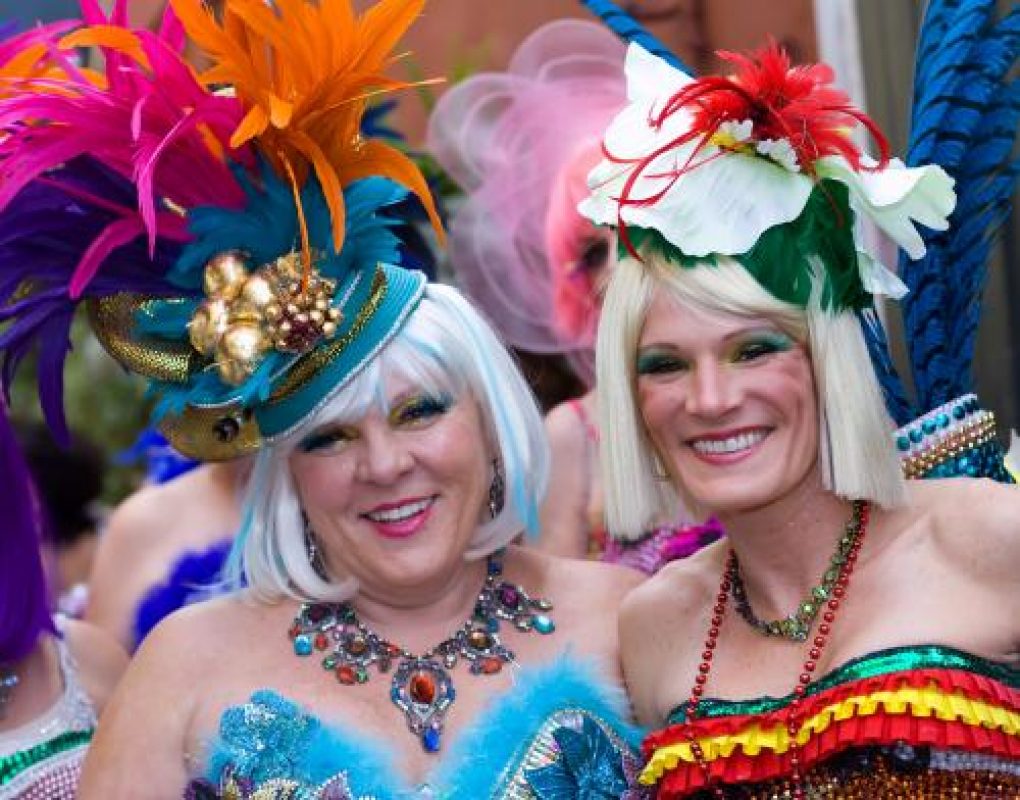
Mardi Gras Balls
Mardi Gras
balls are an extremely important part of LGBTQ Mardi
Gras celebrations. They are typically themed and feature
dazzling handmade costumes and presentations of krewe
royalty. Here are some of the best-known gay Carnival
balls.
--Armeinius
--Petronius
--Lords of Leather
--Satyricon
--Amon-Ra
--Krewe of Mwindo
--Krewe of Stars
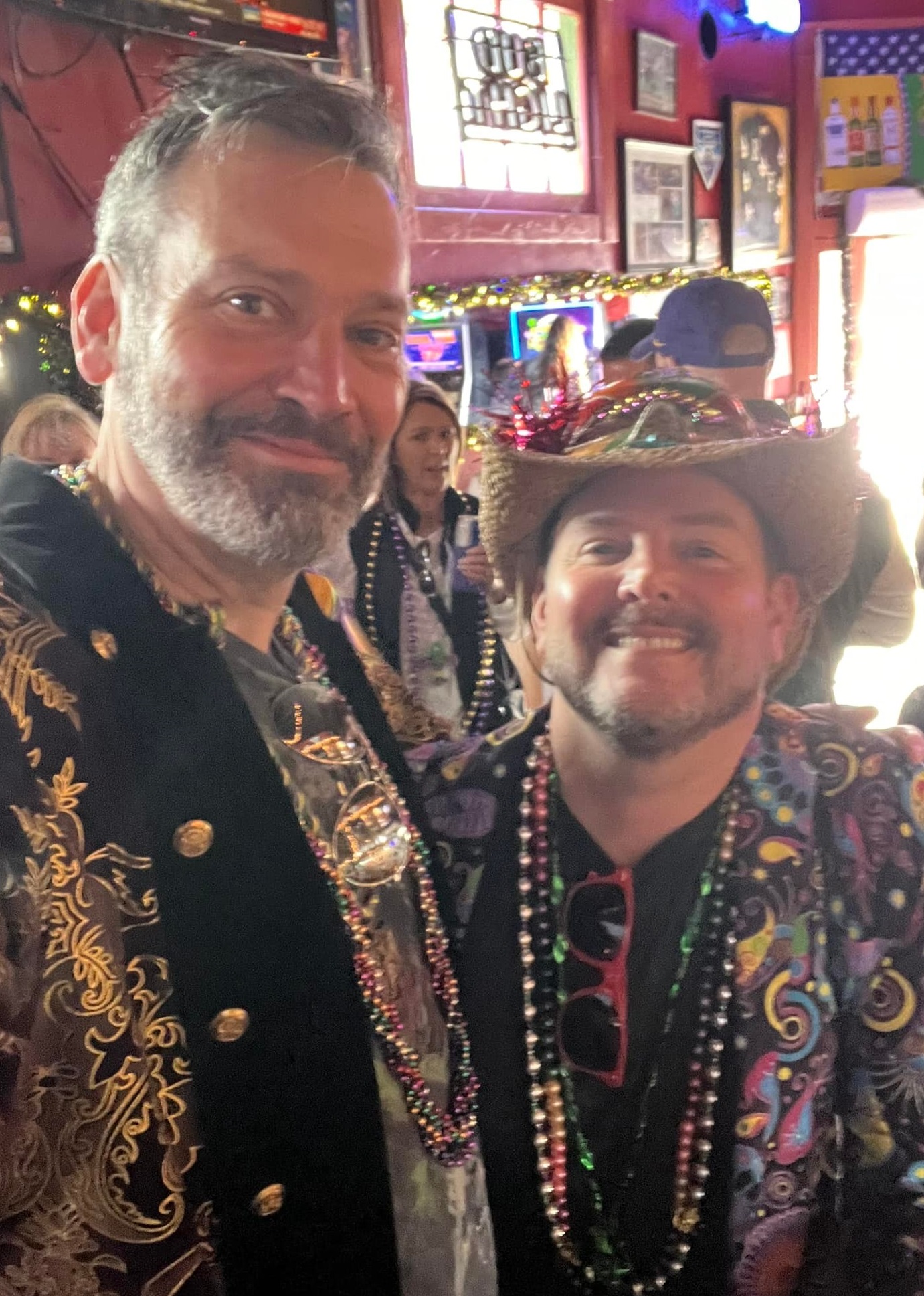
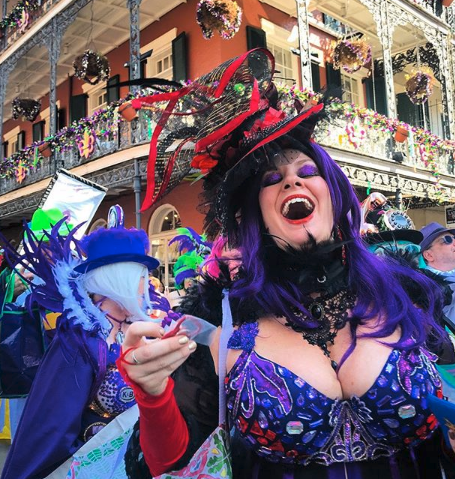
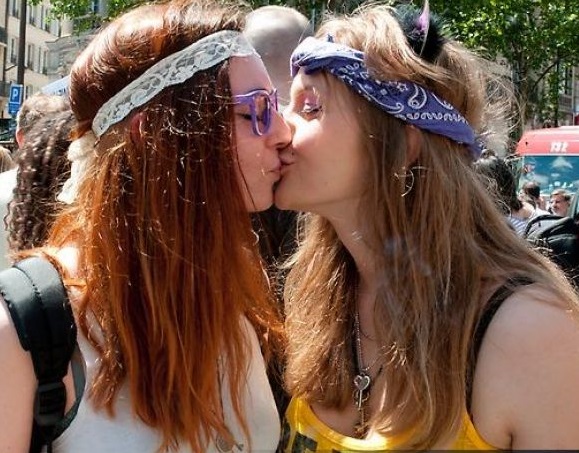
Other Gay Carnival Events
Fat Monday
Luncheon - A tradition since 1949, the Fat
Monday Luncheon is the oldest organized activity in all
of Louisiana LGBTQ history. The luncheon began when Bob
Demmons crowned one of his out-of town Mardi Gras guests
Queen of the luncheon during a small gathering at
Brennan’s restaurant. After the group grew too large for
Brennan’s, the organizers approached Arnaud’s restaurant
where they were welcomed with open arms. Each year, two
queens are crowned: one from out of town and one from
New Orleans. Other participants are singled out for
various honors as well.
Bourbon Street Awards - The Bourbon
Street Awards, which takes place in the French Quarter
every year on Mardi Gras morning, is Carnival’s ultimate
costume contest. Awards are given in a variety of
categories, including Best Leather, Best Drag, Best
Group and Best Overall Costume. Cash prizes are awarded
and the event is hosted by celebrity emcees.
LGBTQ Mardi Gras
New Orleans: Home of Mardi
Gras
Guide to LGBTQ Mardi Gras
Travel Guide: New Orleans Gay Mardi Gras
Gay
Mardi Gras History
About Mardi Gras
Video: Celebrating Mardi Gras in New Orleans
Celebrating Mardi Gras
Mardi Gras Traditions
Celebrating Pride in New Orleans
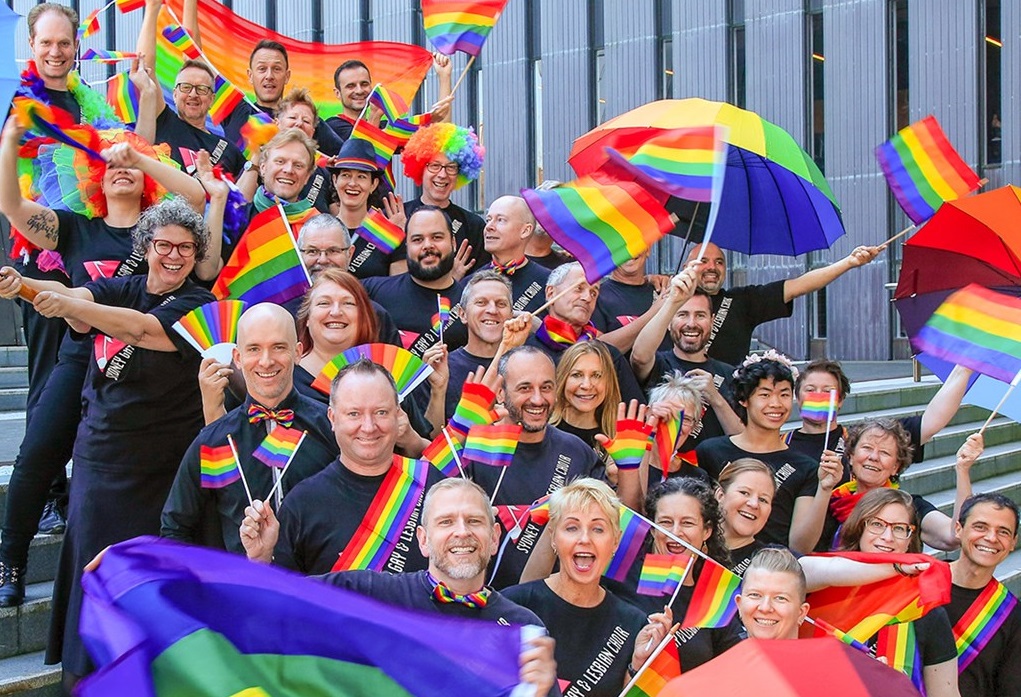
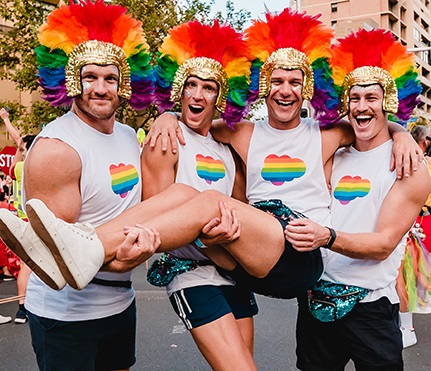
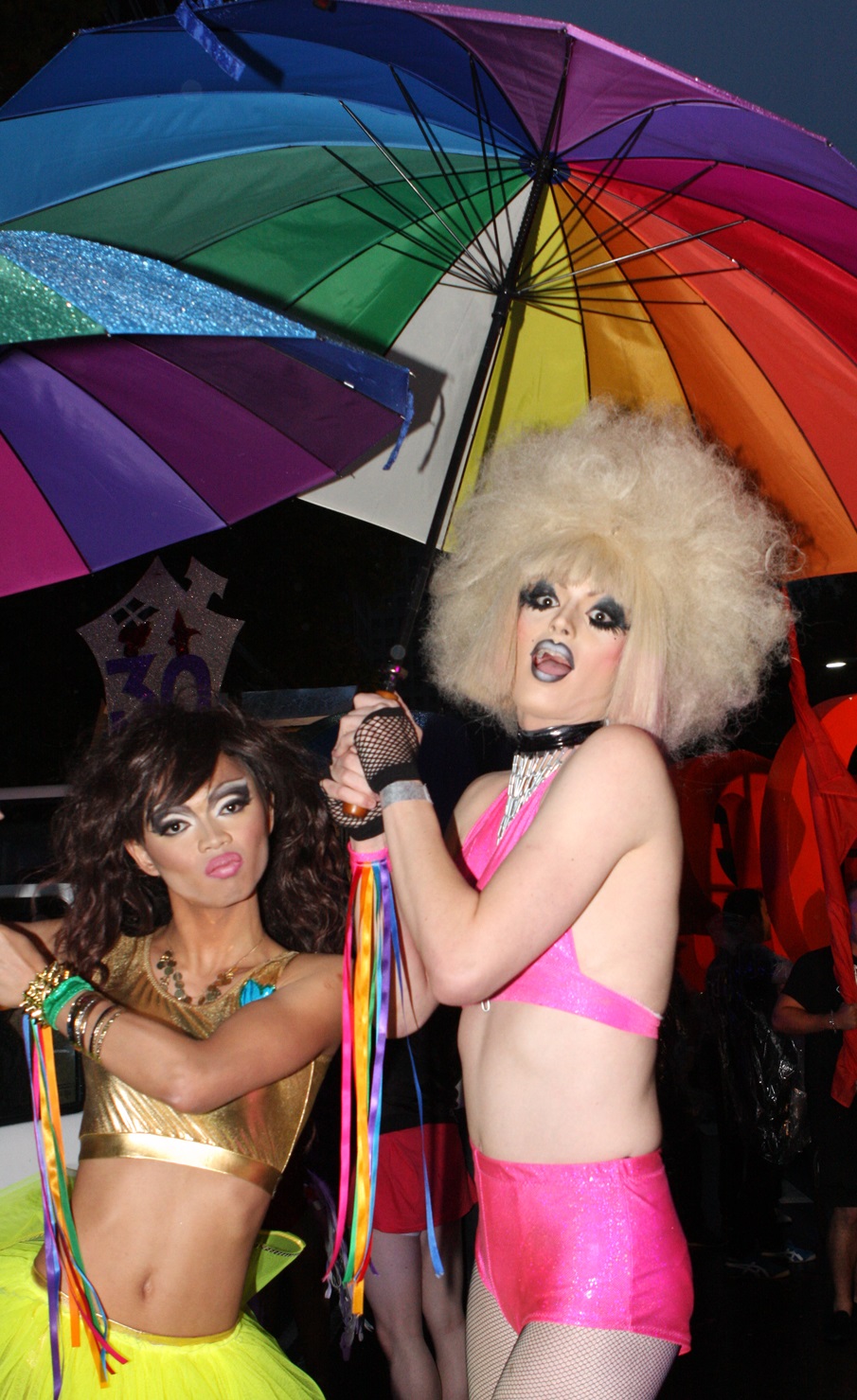
Sydney Mardi Gras
Gay
Pride Aussie Style
The Sydney
Gay and Lesbian Mardi Gras or Sydney Mardi Gras is an
event in Sydney, New South Wales, Australia, attended by
hundreds of thousands of people from around Australia
and overseas. One of the largest such festivals in the
world, Mardi Gras is the largest Pride event in Oceania.
It includes a variety of events such as the Sydney Mardi
Gras Parade and Party, Bondi Beach Drag Races, Harbour
Party, the academic discussion panel Queer Thinking,
Mardi Gras Film Festival, as well as Fair Day, which
attracts 70,000 people to Victoria Park, Sydney.
The Sydney Gay & Lesbian Mardi Gras is one of
Australia's biggest tourist drawcards, with the parade
and dance party attracting many international and
domestic tourists. It is New South Wales' second-largest
annual event in terms of economic impact, generating an
annual income of about A$30 million for the state.
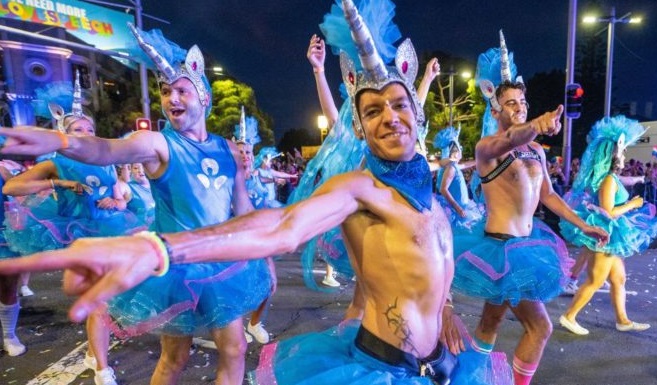
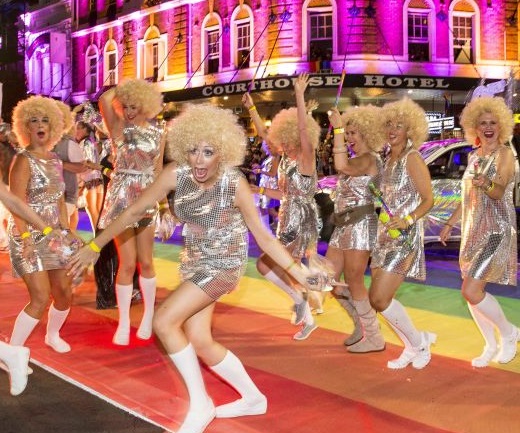
The event grew from gay rights parades held annually
since 1978, when numerous participants had been arrested
by New South Wales Police Force. The Mardi Gras Parade
maintains a political flavour, with many marching groups
and floats promoting LGBTQ rights issues or themes.
Reflecting changes since the first Sydney Gay & Lesbian
Mardi Gras, participants in the Mardi Gras Parade now
include groups of uniformed Australian Defence Force
personnel, police officers from New South Wales Police
Force, as well as interstate and federal police
officers, firefighters and other emergency services
personnel from the Australian LGBTQ communities.
Marriage equality was a dominant theme in the 2011
Sydney Gay & Lesbian Mardi Gras Parade with at least 15
floats lobbying for same-sex marriage.
In 2019 Sydney Gay & Lesbian Mardi Gras submitted a bid
to host WorldPride 2023 competing against Montreal,
Canada and Houston, Texas. InterPride chose Sydney,
Australia to host WorldPride 2023 at their Athens
October 2019 Annual General Meeting of three hundred
delegate organizations, the first time WorldPride will
be held in the Southern Hemisphere or Asia Pacific
region.
Historical Notes: Mardi Gras
Popular Mardi Gras Traditions
Mardi Gras Traditions You Need to Know About
Inside the Undiscovered Gay Mardi Gras
Video: Fabulous Gay Mardi Gras
Vintage Gay Mardi Gras Images
About Sydney Gay and Lesbian Mardi Gras
Homepage: Sydney
Gay and Lesbian Mardi Gras
Sydney: Welcome to Gay and Lesbian Mardi Gras
Southern Decadence: New Orleans's Massive Queer Party
Pride in New Orleans
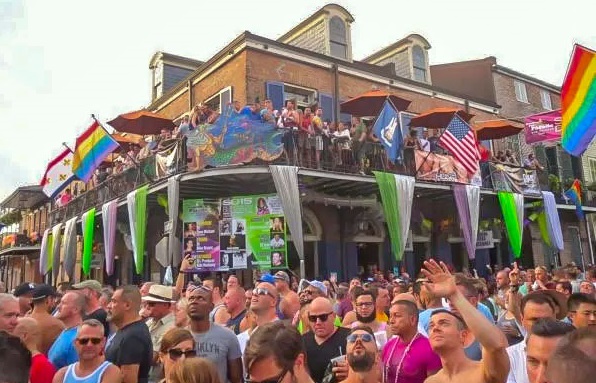
Southern Decadence
Queer Labor Day Weekend Party
Southern Decadence is an annual six-day event held in
New Orleans, Louisiana, by the gay and lesbian community
during Labor Day Weekend, August 31 - September 4,
culminating in a parade through the French Quarter on
the Sunday before Labor Day.
Southern Decadence is street festival party that began
back in 1972 as a going away party (to bid farewell to
summer). The event started out very small and initially
was just among a group of friends who called themselves
“Decadents.” Since the group had so much fun over Labor
Day Weekend in 1972, they decided to plan another event
for that weekend over the Summer of 1973. Each year, the
festival kept growing and blossomed into the event it is
today. In simplest terms, modern-day Southern Decadence
is a weekend-long festival taking place in and around
the French Quarter, that includes drag shows, bar
events, pool parties, community events, and much more.
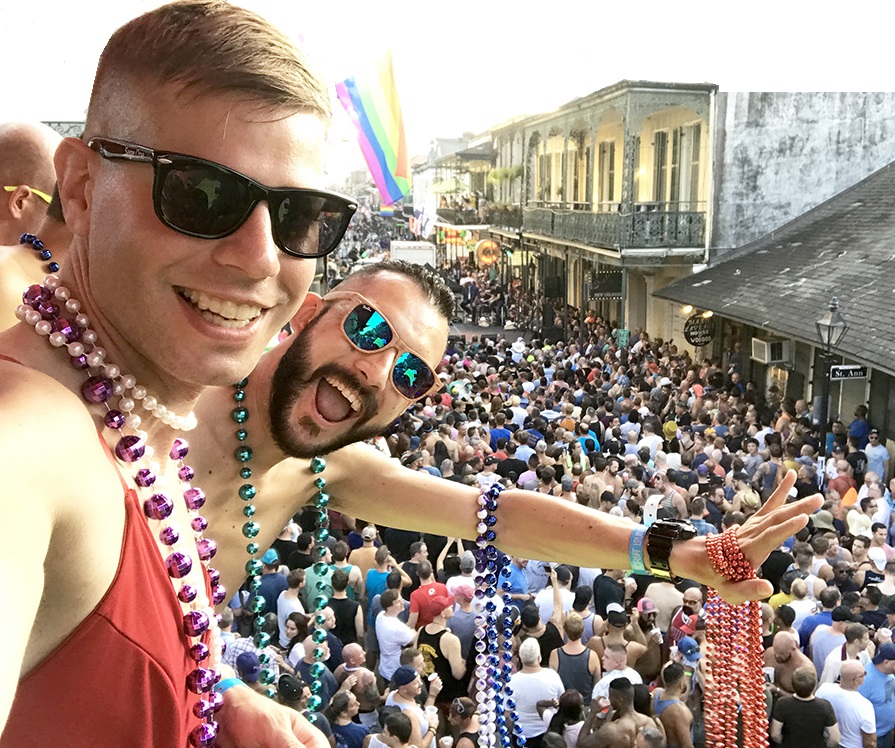
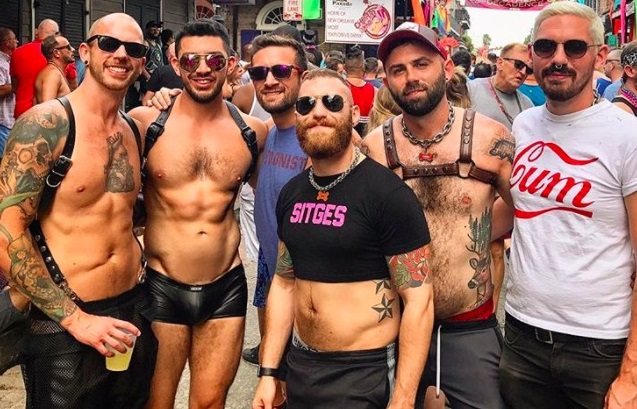
Southern Decadence: New Orleans's Massive Queer Party
About Southern Decadence
Southern Decadence Explained
Southern Decadence Guide
This Labor Day weekend extravaganza is a cornerstone of
queer culture in New Orleans. The multi-day event is
often regarded as a combination of New Orleans Pride and
Gay Mardi Gras, though with a bawdier, adult-focused
twist. Southern Decadence attracts attendees from all
over the world and encompasses street parties, concerts,
club events, a parade, and much more.
The entire city gets in on the action! LGBTQ bars,
restaurants, and other venues from the Lower Garden
District to the Bywater will have their own special take
on Decadence Weekend. The intersection of St. Ann and
Bourbon streets will be high traffic all weekend and
they shut down the street for a giant concert on
Saturday afternoon. The Phoenix in the Marigny is a
popular spot and hosts a large beer bust/street
festival. Also, be sure to check out The Country Club
for their drag brunch and pool! The annual parade is
typically held on Sunday and winds through French
Quarter passing most of the gay bars.
There’s no single event that defines Southern Decadence.
Local businesses often organize their own events with
exclusive deals, and the fun always spills into the
streets, ensuring you don’t need a specific destination
to fully immerse yourself in the experience. However,
there are some annual events that newcomers and
experienced revelers alike will want to look out for.
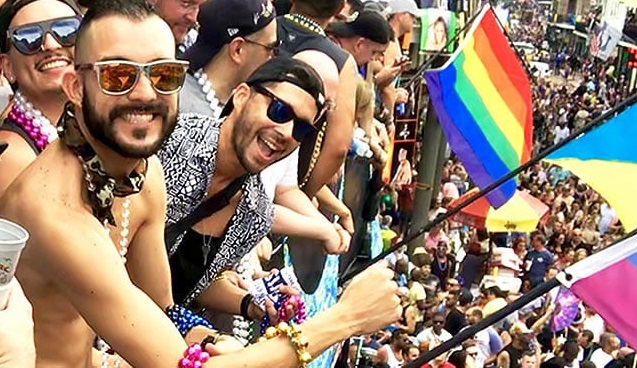
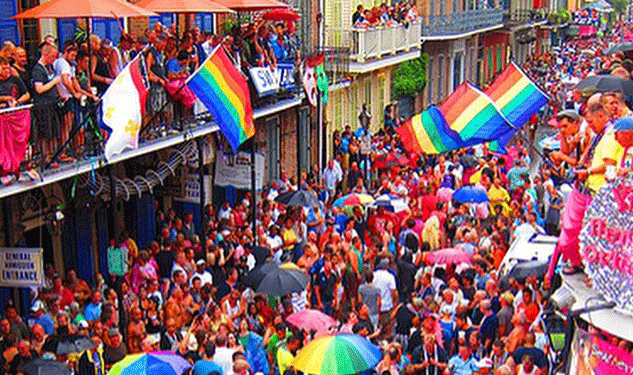
Those include the Beer Bust at the Phoenix (Friday and
Saturday evening), the Bourbon Street Extravaganza at
the corner of Bourbon and St. Ann Streets (Saturday
afternoon), and in classic New Orleans fashion, a
Southern Decadence Parade (Sunday) that winds past some
of the city’s notable queer hotspots.
Southern Decadence is marked by parades, bead tossing,
street parties and dance parties. In these ways it
resembles New Orleans Mardi Gras, however, Southern
Decadence tends to be more sexual in tone and is
generally geared towards more upscale and mature
revelers. Decadence crowds in the Quarter typically
match or exceed Mardi Gras crowds. Most events take
place in or around the French Quarter neighborhood
centered at the intersection of Bourbon and St. Ann
streets.
Crowds range from 100,000 to 300,000 revelers from
across the nation and world. In 2018, there were over
250,000 participants and the positive economic impact on
the City of New Orleans was estimated at over $275
million.
Southern Decadence: New Orleans's Massive Queer Party
About Southern Decadence
Southern Decadence Explained
Southern Decadence Guide
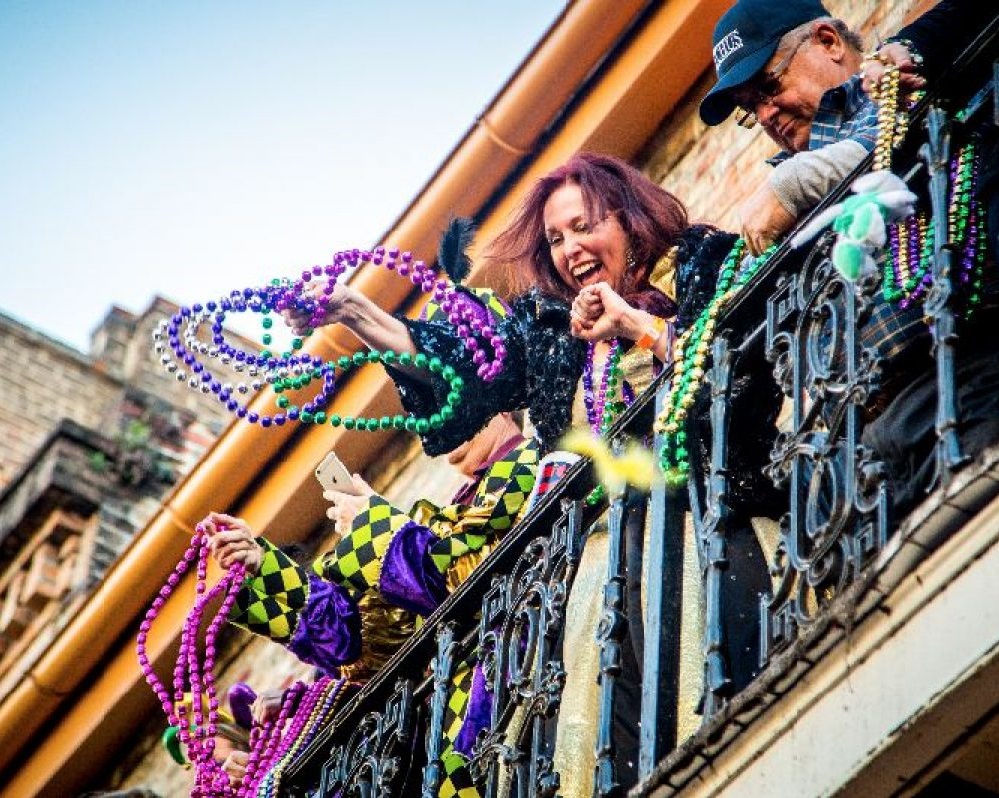
Origins of Mardi
Gras
Fat
Tuesday in the New World
The
origins of Mardi Gras can be traced to medieval Europe,
passing through Rome and Venice in the 17th and 18th
centuries to the French House of the Bourbons. From
here, the traditional revelry of "Boeuf Gras," or fatted
calf, followed France to her colonies.
On March 2, 1699, French-Canadian explorer Jean Baptiste
Le Moyne Sieur de Bienville arrived at a plot of ground
60 miles directly south of New Orleans, and named it
"Pointe du Mardi Gras" when his men realized it was the
eve of the festive holiday. Bienville also established
"Fort Louis de la Louisiane" (which is now Mobile,
Alabama) in 1702. In 1703, the tiny settlement of Fort
Louis de la Mobile celebrated America's very first Mardi
Gras.
In 1704, Mobile established a secret society (Masque de
la Mobile), similar to those that form our current Mardi
Gras krewes. It lasted until 1709. In 1710, the "Boeuf
Gras Society" was formed and paraded from 1711 through
1861. The procession was held with a huge bull's head
pushed along on wheels by 16 men. Later, Rex would
parade with an actual bull, draped in white and
signaling the coming Lenten meat fast. This occurred on
Fat Tuesday.
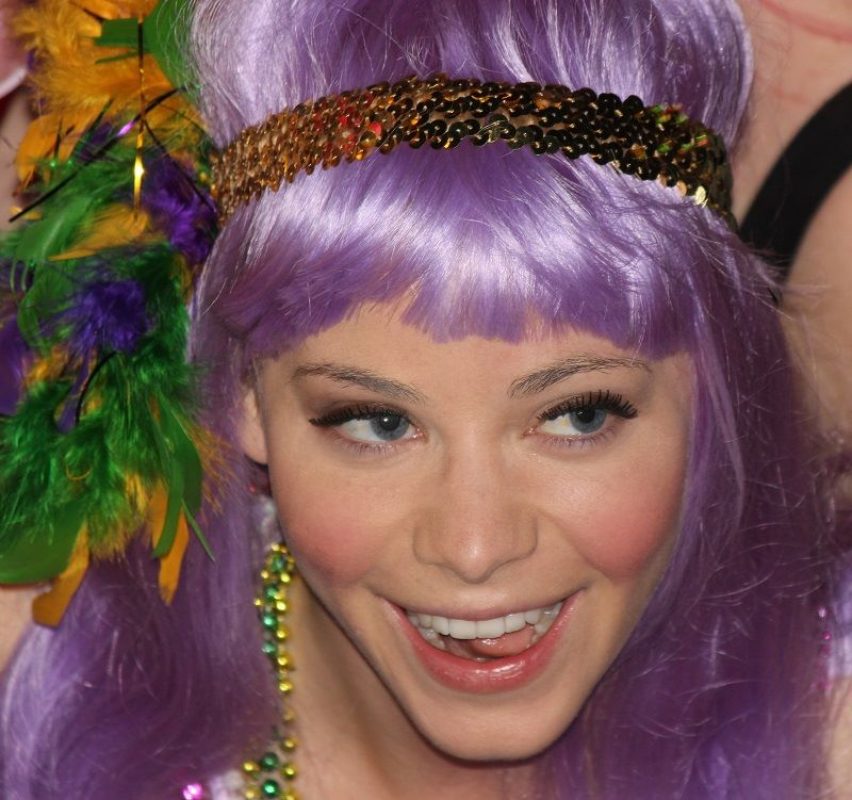
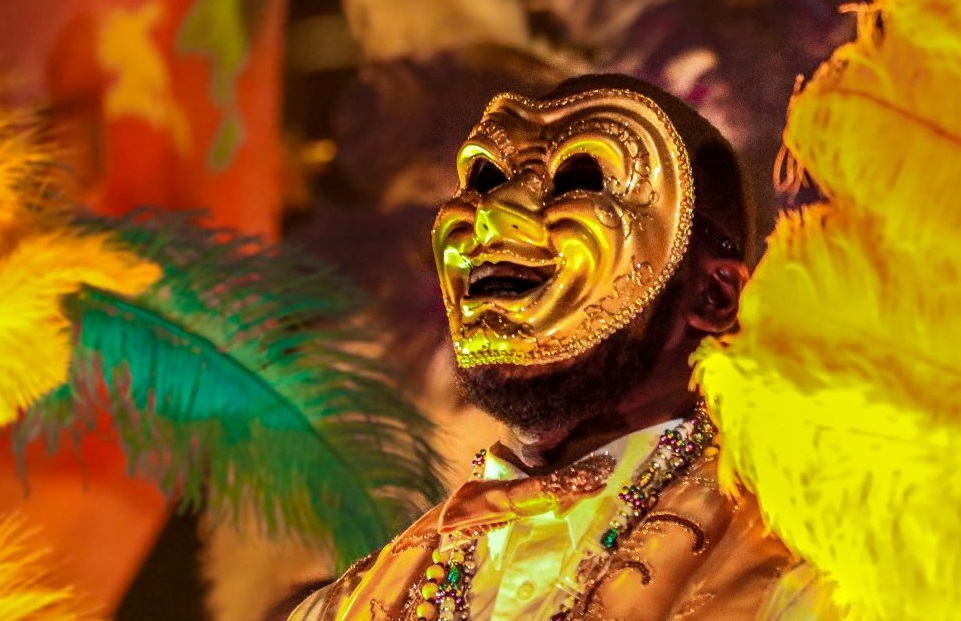
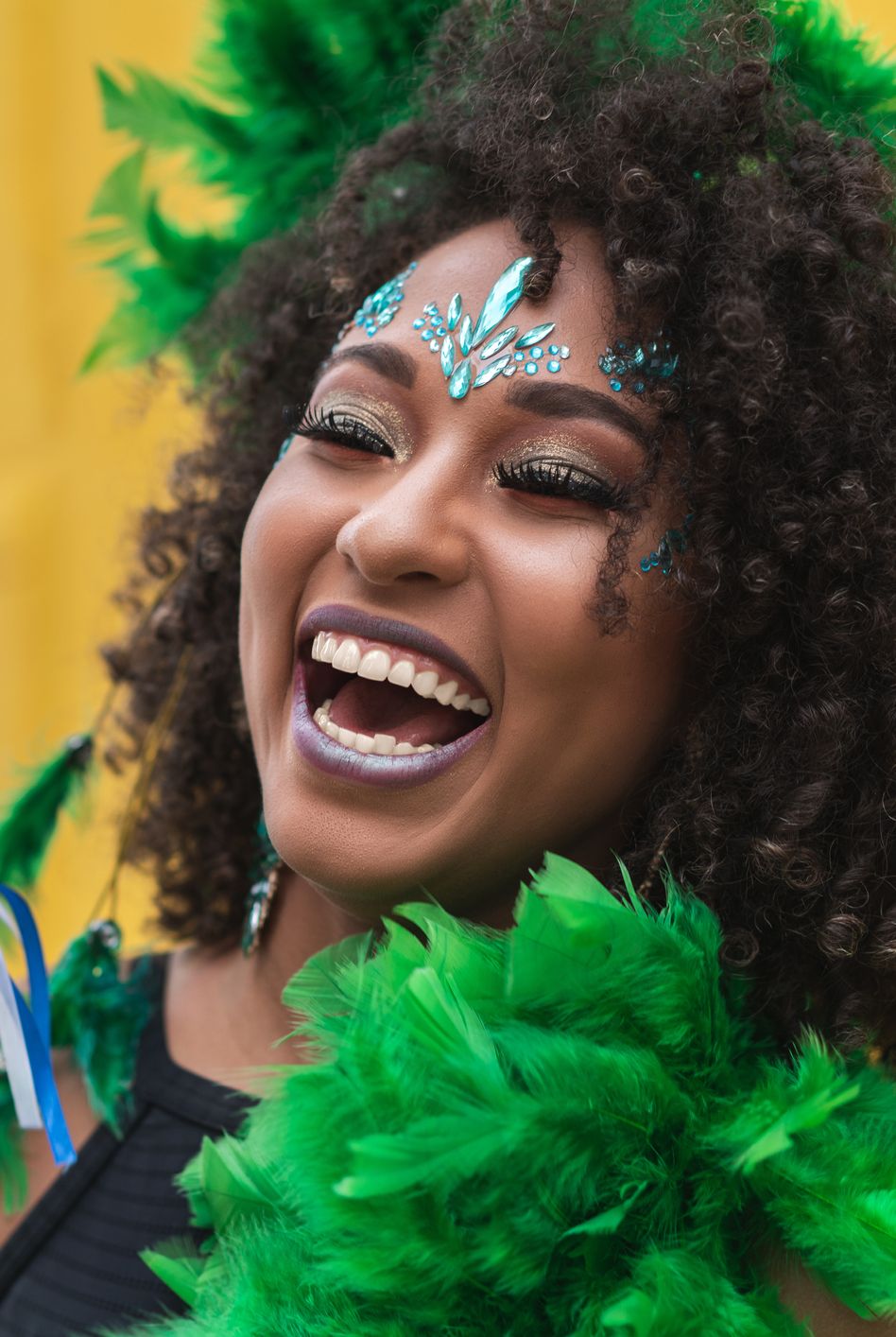
New Orleans was established in 1718 by Bienville. By the
1730s, Mardi Gras was celebrated openly in New Orleans,
but not with the parades we know today. In the early
1740s, Louisiana's governor, the Marquis de Vaudreuil,
established elegant society balls, which became the
model for the New Orleans Mardi Gras balls of today.
The earliest reference to Mardi Gras "Carnival" appears
in a 1781 report to the Spanish colonial governing body.
That year, the Perseverance Benevolent & Mutual Aid
Association was the first of hundreds of clubs and
carnival organizations formed in New Orleans.
By the late 1830s, New Orleans held street processions
of maskers with carriages and horseback riders to
celebrate Mardi Gras. Dazzling gaslight torches, or
"flambeaux," lit the way for the krewe's members and
lent each event an exciting air of romance and
festivity. In 1856, six young Mobile natives formed the
Mistick Krewe of Comus, invoking John Milton's hero
Comus to represent their organization. Comus brought
magic and mystery to New Orleans with dazzling floats
(known as tableaux cars) and masked balls. Krewe members
remained anonymous.
In 1870, Mardi Gras' second Krewe, the Twelfth Night
Revelers, was formed. This is also the first recorded
account of Mardi Gras "throws."
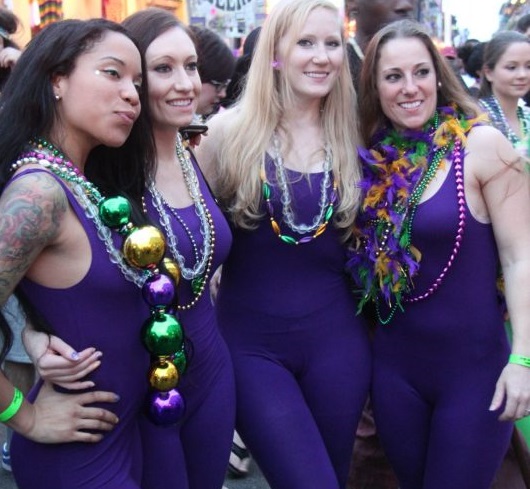
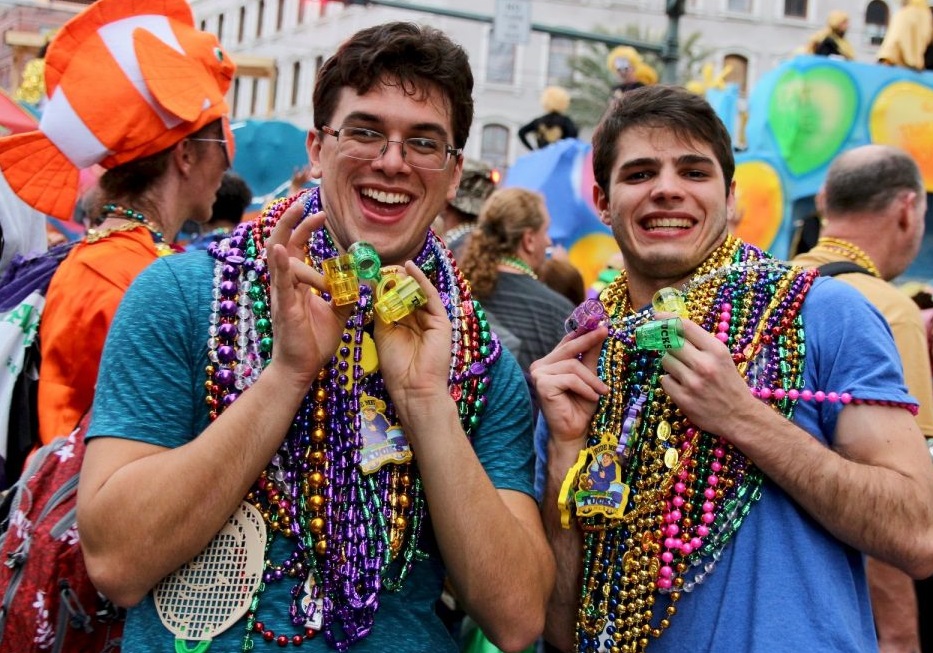
LGBTQ Mardi Gras
New Orleans: Home of Mardi
Gras
Guide to LGBTQ Mardi Gras
Travel Guide: New Orleans Gay Mardi Gras
Gay
Mardi Gras History
About Mardi Gras
Video: Celebrating Mardi Gras in New Orleans
Celebrating Mardi Gras
Mardi Gras Traditions
Pride in New Orleans
Newspapers began to announce Mardi Gras events in
advance, and they even printed "Carnival Edition"
lithographs of parades' fantastic float designs (after
they rolled, of course - themes and floats were always
carefully guarded before the procession). At first,
these reproductions were small, and details could not be
clearly seen. But beginning in 1886 with Proteus' parade
"Visions of Other Worlds," these chromolithographs could
be produced in full, saturated color, doing justice to
the float and costume designs of Carlotta Bonnecase,
Charles Briton and B.A. Wikstrom. Each of these
designers' work was brought to life by talented Parisian
paper-mache' artist Georges Soulie', who for 40 years
was responsible for creating all of Carnival's floats
and processional outfits.
1872 was the year that a group of businessmen invented a
King of Carnival, Rex, to preside over the first daytime
parade. To honor the visiting Russian Grand Duke Alexis
Romanoff, the businessmen introduced Romanoff's family
colors of purple, green and gold as Carnival's official
colors. Purple stands for justice; gold for power; and
green for faith. This was also the Mardi Gras season
that Carnival's improbable anthem, "If Ever I Cease to
Love," was cemented, due in part to the Duke's fondness
for the tune.
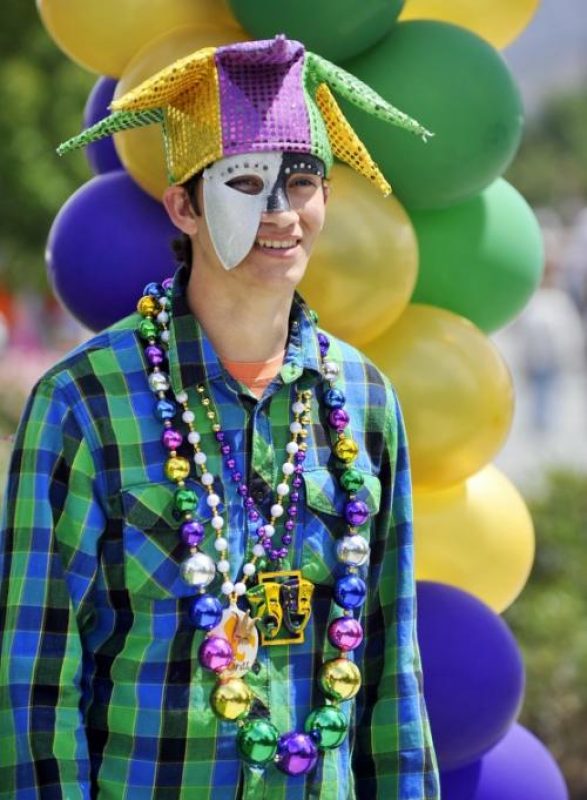
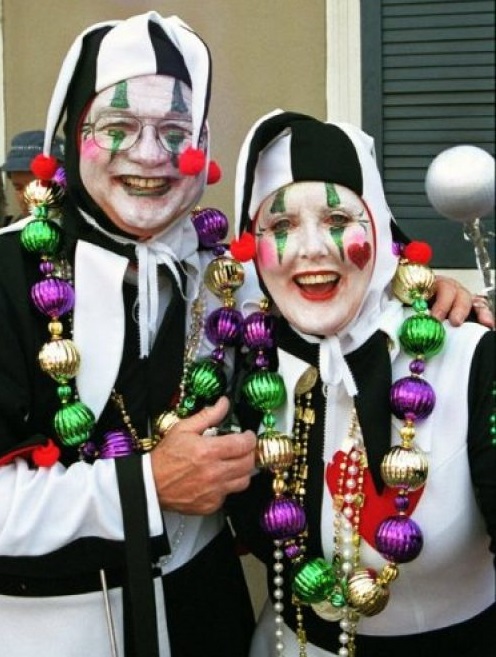
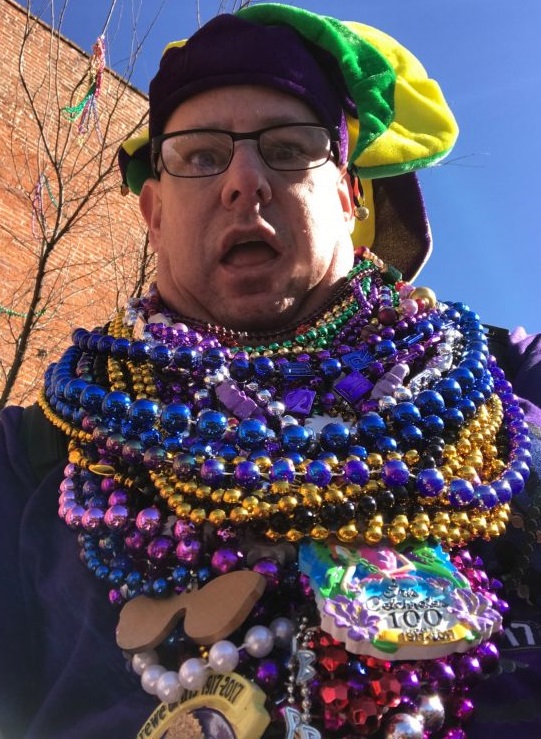
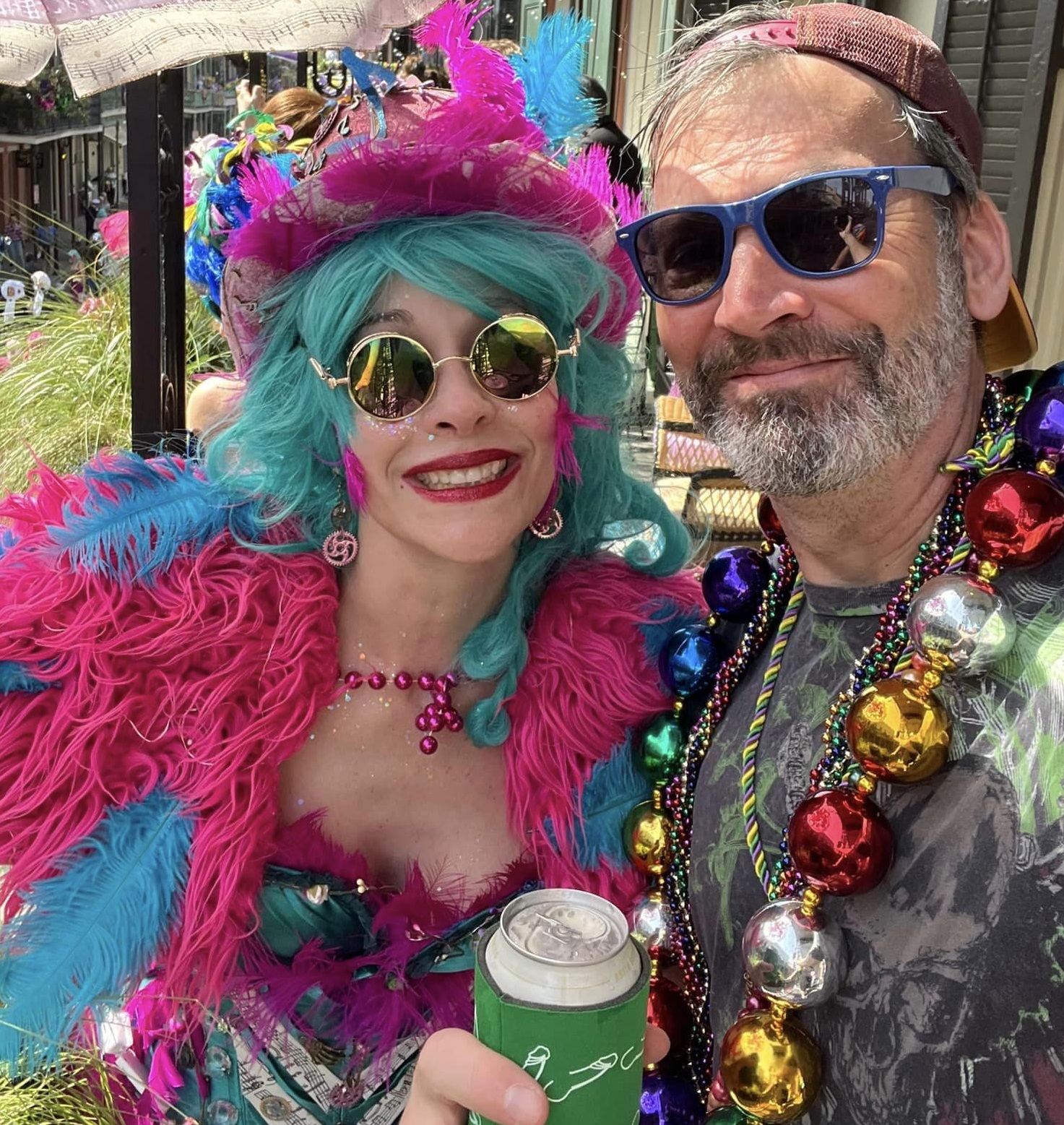
The following year, floats began to be constructed
entirely in New Orleans instead of France, culminating
with Comus' magnificent "The Missing Links to Darwin's
Origin of Species," in which exotic paper-mache' animal
costumes served as the basis for Comus to mock both
Darwin's theory and local officials, including Governor
Henry Warmoth. In 1875, Governor Warmoth signed the
"Mardi Gras Act," making Fat Tuesday a legal holiday in
Louisiana, which it still is.
Like Comus and the Twelfth Night Revelers, most Mardi
Gras krewes today developed from private social clubs
with restrictive membership policies. Since all of these
parade organizations are completely funded by their
members, New Orleanians call it the "Greatest Free Show
on Earth!"
LGBTQ Mardi Gras
New Orleans: Home of Mardi
Gras
Historical Notes: Mardi Gras
Popular Mardi Gras Traditions
Mardi Gras Traditions You Need to Know About
Guide to LGBTQ Mardi Gras
Travel Guide: New Orleans Gay Mardi Gras
Gay
Mardi Gras History
About Mardi Gras
Video: Celebrating Mardi Gras in New Orleans
Celebrating Mardi Gras
Mardi Gras Traditions
Inside the Undiscovered Gay Mardi Gras
Video: Fabulous Gay Mardi Gras
Vintage Gay Mardi Gras Images
About Sydney Gay and Lesbian Mardi Gras
Homepage: Sydney
Gay and Lesbian Mardi Gras
Sydney: Welcome to Gay and Lesbian Mardi Gras
Southern Decadence: New Orleans's Massive Queer Party
Mardi Gras
History
Laissez le bontemps roulez!
Every
year, New Orleans shuts down and throws the party of
parties. Everywhere else in the country, it's just
another Tuesday, but, in New Orleans it's Mardi Gras!
Mardi Gras is more than a single day of celebration.
It's a state of mind. Mardi Gras reflects and defines
the cultural traditions of New Orleans. Most "outsiders"
assume Mardi Gras takes place on a single day. This is
true. Mardi Gras is French for Fat Tuesday. Some time
ago, the tradition was to slaughter a fatted calf on the
Tuesday before the beginning of the Lenten 40 day fast.
Thus, the coining of the phrase "Fat Tuesday."
There is a distinction, however, between Mardi Gras and
Carnival. Mardi Gras is a single day that is the climax
for the Carnival season. The Carnival season begins on
January 6th or Twelfth Night (Kings Night) and runs
until the beginning of Lent - the Easter season (Ash
Wednesday). Carnival can run as long as two months,
depending on the church calendar.
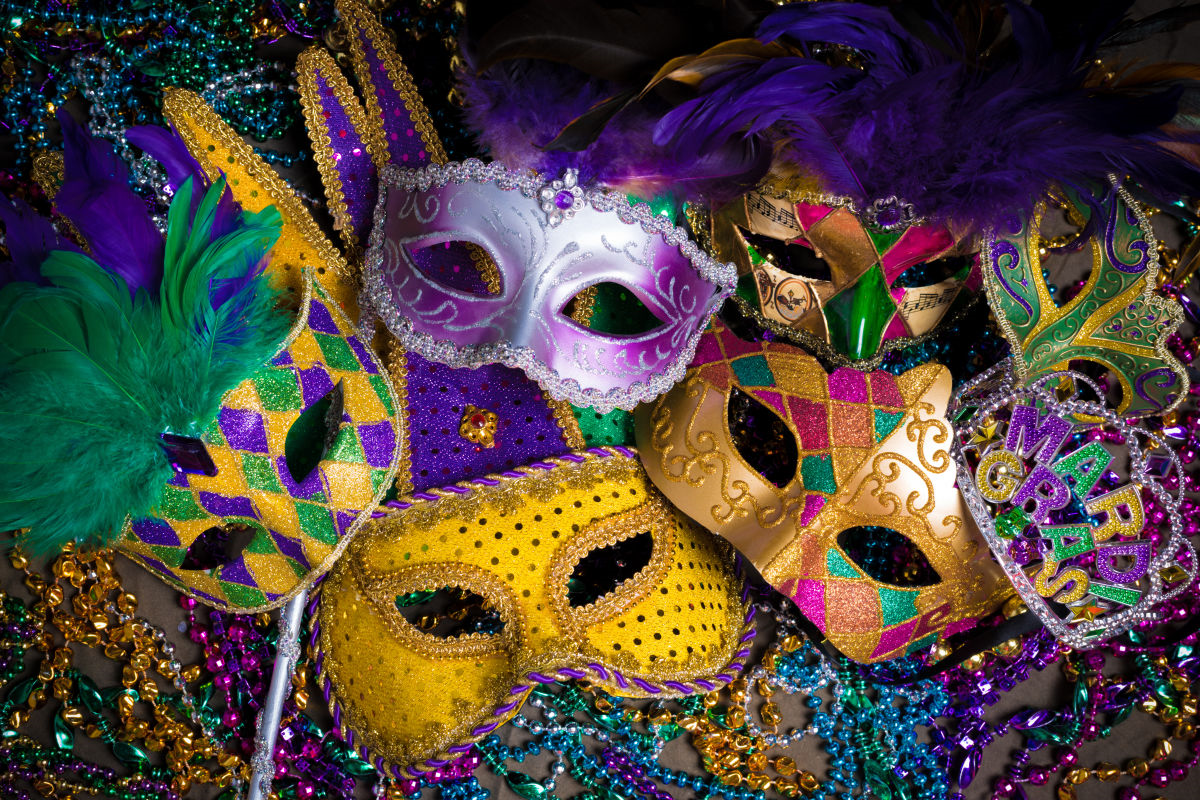
Mardi Gras day or Fat Tuesday is the traditional day for
masking. However, you'll find people enjoying this
tradition beginning the Friday before Mardi Gras day.
Mardi Gras costumes are elaborate. Sequins and feathers
rule the day. Families and friends often mask as a
group. It's not unusual to see a marching box of Crayola
Crayons or a studly herd of bare chested firemen
carrying a ten foot hose. Anything goes on Mardi Gras
day. Even though the obscenity laws are still on the
books, it's amazing what people get away with wearing
or, should we say, NOT wearing.
The French Quarter is often the location for "adult"
Mardi Gras. Costumes can be more than revealing and
there are some Carnival traditions (Show me your tits!)
that would land a person in jail on any other day of the
year. Police tend to look the other way at most of the
stuff that goes on Mardi Gras day.
The lower French Quarter is the center for Gay Mardi
Gras. This is where you'll find the more extravagant
costumes. People come from all over the world just to
strut around in costumes of their own design. Of course,
going home with a prestigious Bourbon Street Award is
often the motivation for their sequined madness.
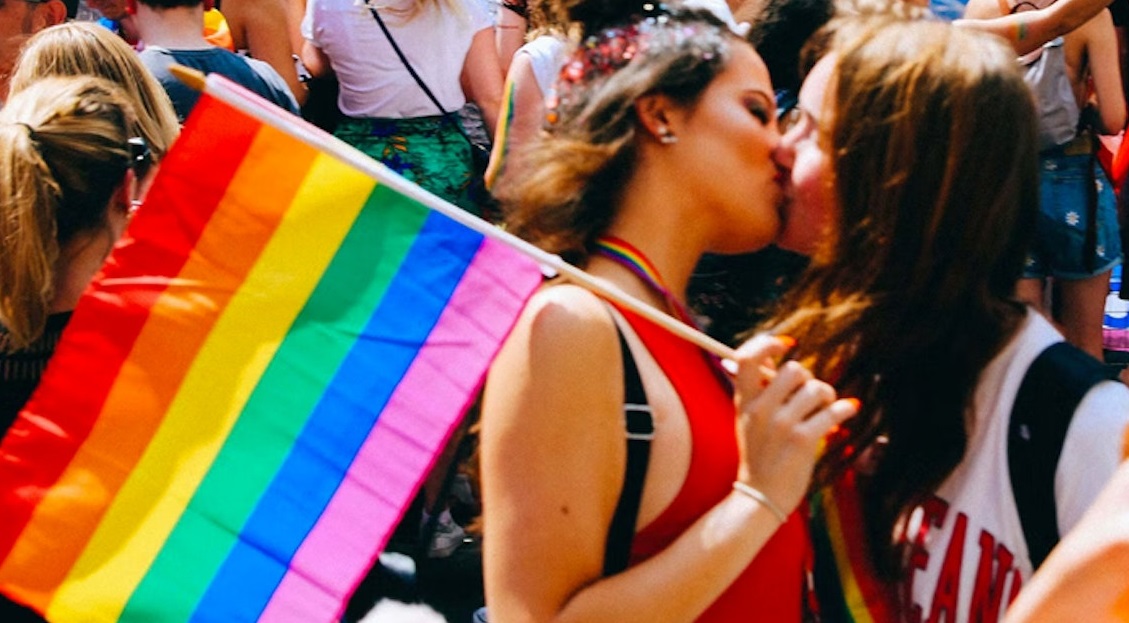
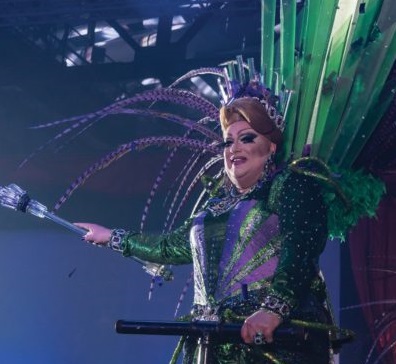
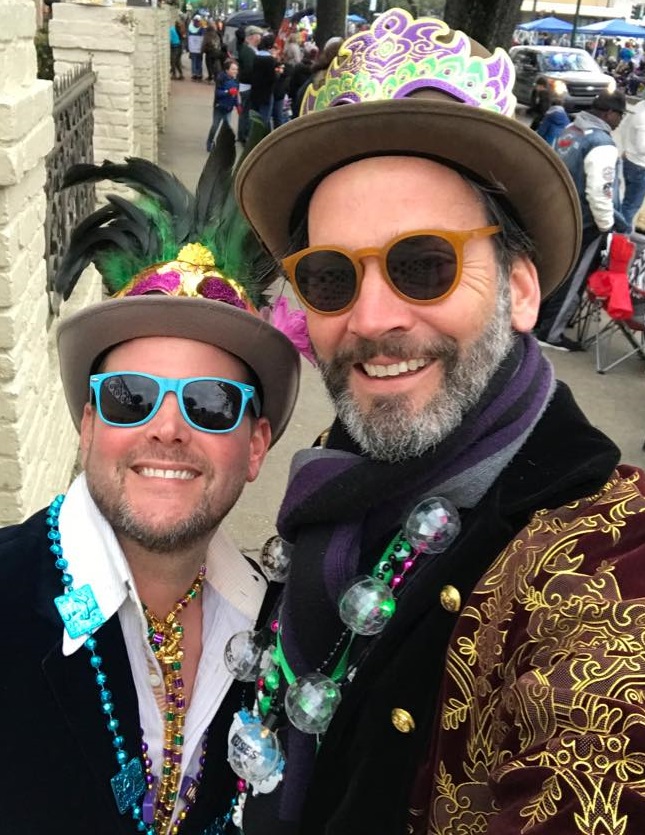
Historical Notes: Mardi Gras
Popular Mardi Gras Traditions
Mardi Gras Traditions You Need to Know About
Inside the Undiscovered Gay Mardi Gras
Video: Fabulous Gay Mardi Gras
Vintage Gay Mardi Gras Images
About Sydney Gay and Lesbian Mardi Gras
Homepage: Sydney
Gay and Lesbian Mardi Gras
Sydney: Welcome to Gay and Lesbian Mardi Gras
Although
parades roll for weeks before Fat Tuesday, on the Day of
Days - parades begin early in the morning with the ever
popular Zulu and don't stop until the last float passes
late in the night. The highlight of the parades is the
toast between the King of Carnival - Rex - and the mayor
of New Orleans. This is the official proclamation and
beginning of Mardi Gras. During the toast, Rex gives all
city workers the day off and commands everyone to have a
good time.
The Carnival season is the highlight of the New Orleans
social calendar. The season officially begins on Twelfth
Night or "Kings Night." Many New Orleanians with
artificial Christmas trees will leave them up and
replace the Christmas decor with purple, gold and green
ornaments. These are the official colors of Carnival.
Legend has it that green represents faith; gold, power;
and purple, justice. Most people believe these colors
were chosen simply because they look good together.
Another Carnival tradition that begins on Twelfth Night
is the King Cake. A King Cake is a ring cake decorated
with sweet purple, gold and green frosting. In every
King Cake there is a little plastic baby representing
the baby Jesus. The person who is lucky enough to bite
into the piece of King Cake with the plastic baby gets
to buy the next King Cake for the next King Cake party.
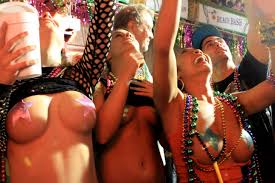
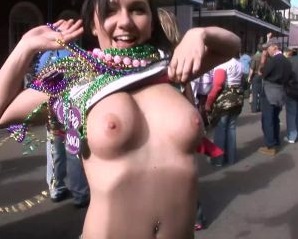
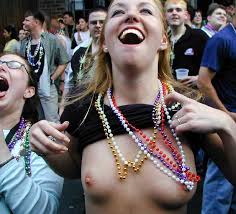
During the Carnival season, Mardi Gras Krewes - local
clubs that sponsor parades and Carnival events - hold
elaborate balls and parties where their King, Queen and
other Royalty are announced for the year. On its
surface, the election of Royalty may seem comical.
However, being chosen is a very special honor and is
taken very seriously by New Orleanians. Mardi Gras
Royalty are elected because of their contributions and
standing in the community. Being chosen to represent a
Krewe as a King or Queen is an honor that announces to
the community at large that these people have made our
city a better place and we recognize their hard work and
dedication.
So be sure to raise your cup and toast every King and
Queen! If you don't live in New Orleans, it is
impossible to understand all the planning, hard work and
expense that go into Carnival. Most krewes begin
planning for Carnival a year or more in advance. People
belonging to a krewe pay dues and spend their own money
to stage their parades and to buy throws. This is not an
inexpensive venture.
The average Mardi Gras krewe spends hundreds of
thousands of dollars and countless hours of donated time
to parade for just a few hours. Why do it? New
Orleanians love their city and you just have to ride in
a Mardi Gras parade to understand the thrill of throwing
stuff to a hungry crowd.
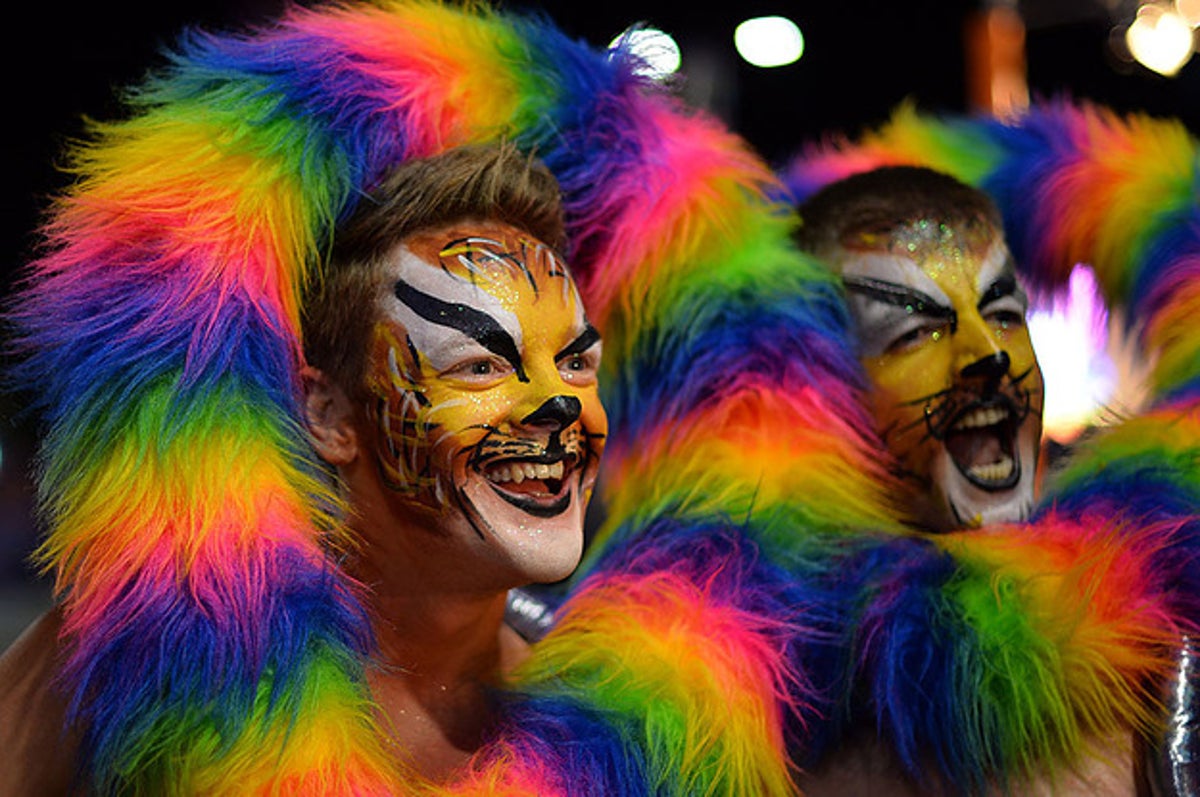
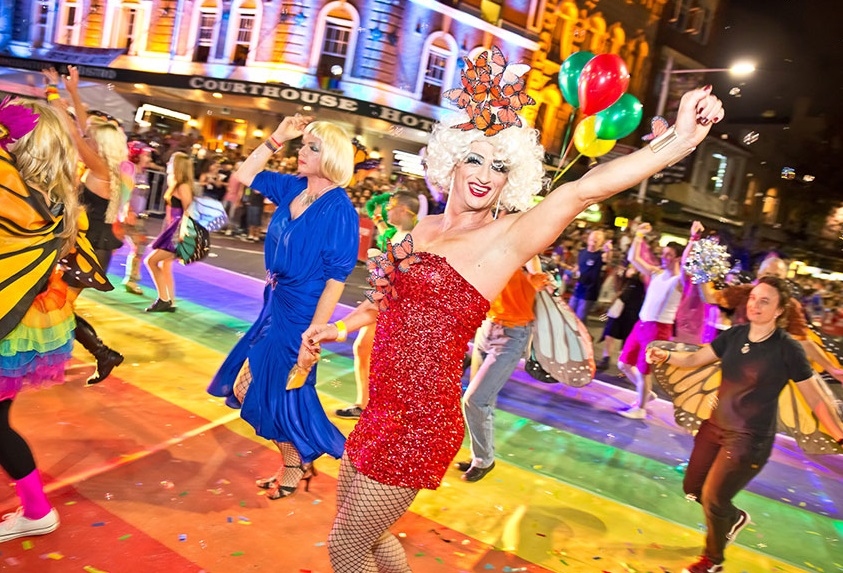
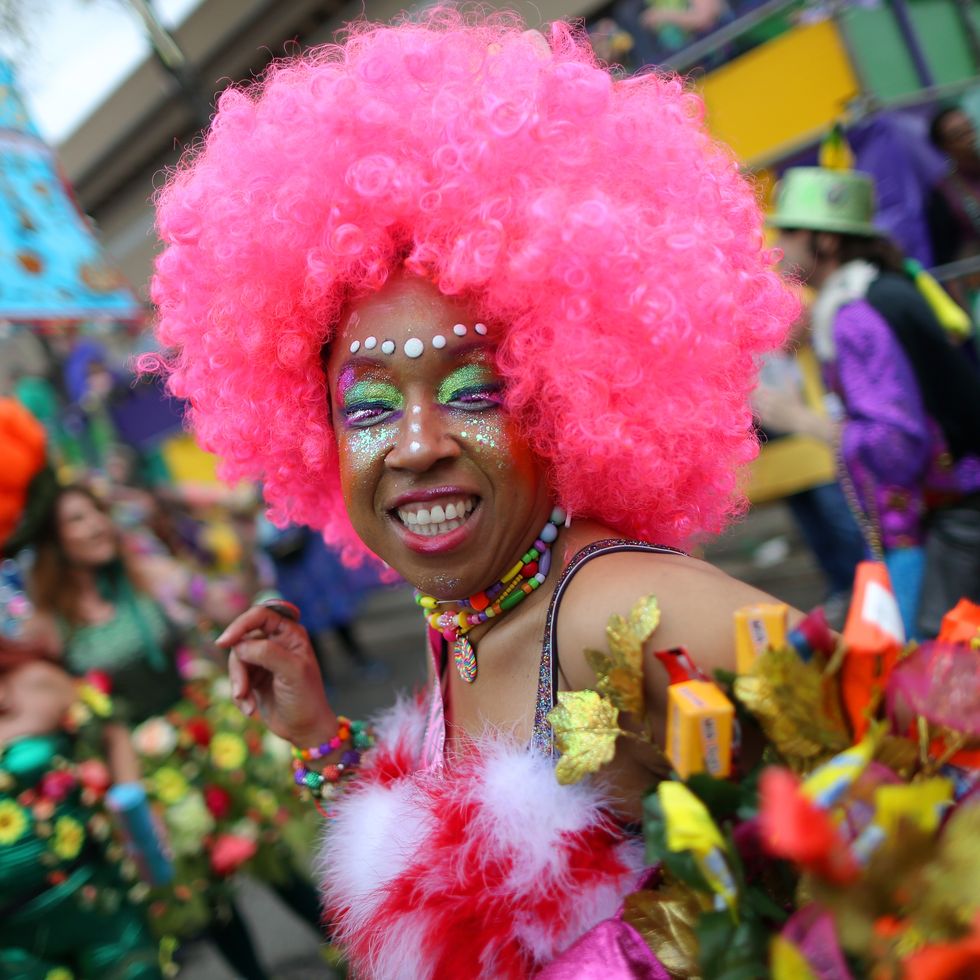
LGBTQ Mardi Gras
New Orleans: Home of Mardi
Gras
Guide to LGBTQ Mardi Gras
Travel Guide: New Orleans Gay Mardi Gras
Gay
Mardi Gras History
About Mardi Gras
Video: Celebrating Mardi Gras in New Orleans
Celebrating Mardi Gras
Mardi Gras Traditions
Celebrating Pride in New Orleans
Although every King and Queen deserve respect, the true
King of Carnival is Rex. The identity of Rex is a secret
until the day before Mardi Gras. People anxiously await
the announcement of the King of Carnival. Being chosen
as the King of Rex is the highest honor New Orleans can
bestow. The King of Rex is chosen because of his
prominent standing in the community. It's a really big
deal.
The Queen of Rex is always a young debutante. It's all
very aristocratic. Carnival officially ends when the
King and Queen of Rex meet, at midnight on Fat Tuesday,
the Queen and King of Comus. When they meet, the
traditional "Whenever I Cease To Love" theme is played
and true New Orleanians' eyes fill with tears from
memories of Mardi Gras past and the fact that they have
to wait another year to have this much fun.
Once the Royalty of Comus and Rex meet, police take to
the streets on horseback - followed by street sweepers -
announcing that Mardi Gras is over and people should
"clear the streets." By this time, most people have had
enough and are ready to rest. As soon as the last parade
passes, the city begins the incredible task of cleaning
up. All the garbage is weighed and this is how New
Orleans estimates how many people came to Mardi Gras.
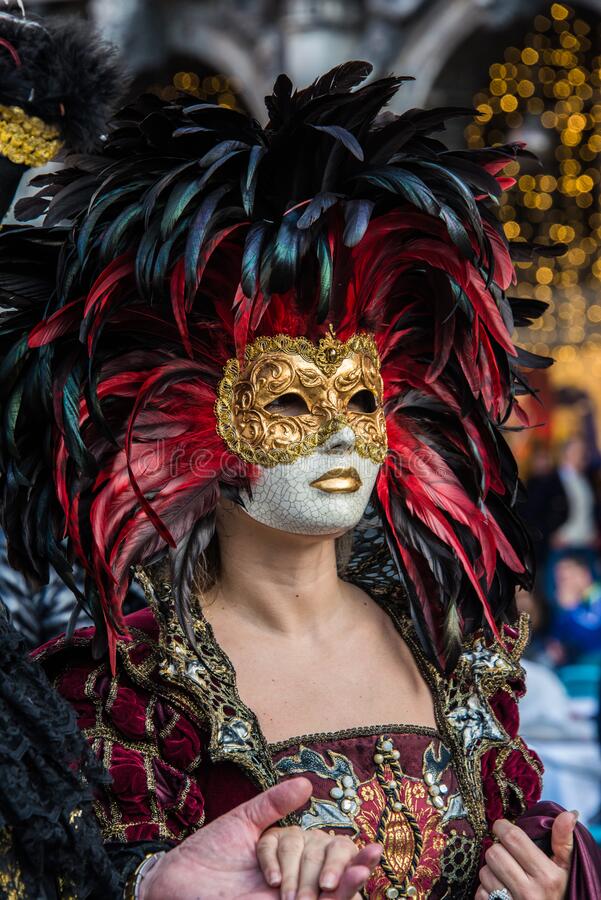
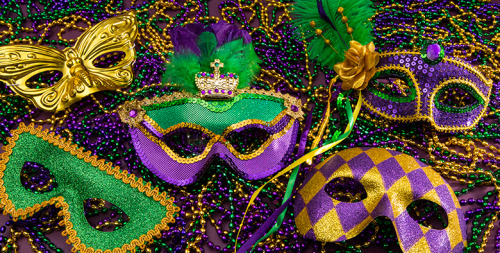
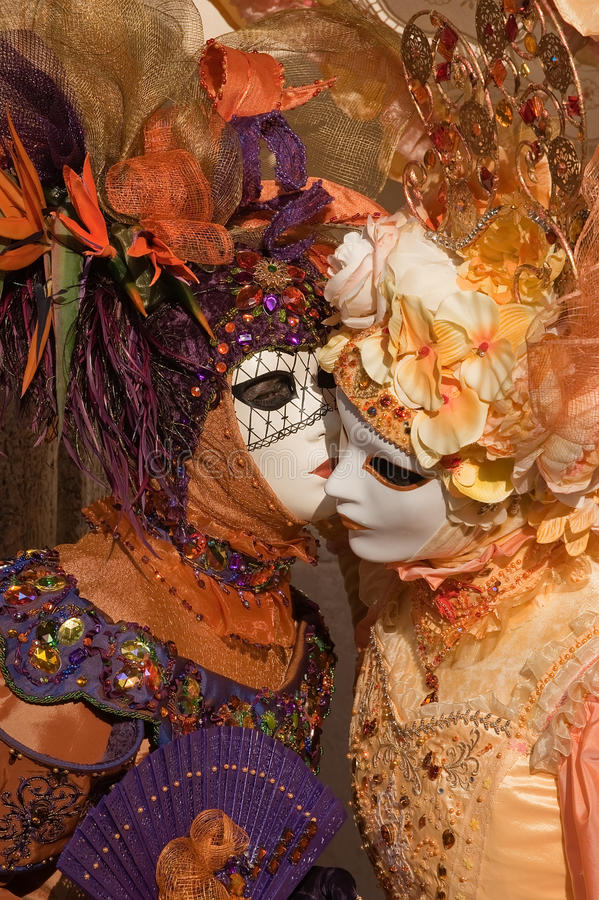
How Mardi Gras started is not really clear. There are
plenty of legends and stories about early Carnival. It's
not certain which are myth and which are fact. Legend
has it that the first Mardi Gras came to be because the
early Christian church adopted and reformed the Roman
feast of Lupercalia, a decadent three days of
celebration, in order to convert the pagans. The early
church renamed the holiday to "carnelevamen," meaning
"farewell to the flesh."
The French coined the phrase Mardi Gras, which means Fat
Tuesday, and brought the holiday with them when they
settled New Orleans. In fact, in 1699 the
French-Canadian explorer Pierre Le Moyne, Sieur
d'Iberville landed near the mouth of the Mississippi
River on Mardi Gras Day and named the plot of ground
"Pointe du Mardi Gras."
Early Mardi Gras was not an organized, community event.
The holiday was basically celebrated by throwing
private, wild parties. After all, New Orleans was and
still is a port city - and you know those sailors!
On February 24th, 1857, Mardi Gras was changed forever.
This was the year that the first true Mardi Gras krewe
was formed. The club called themselves the Mystick Krewe
of Comus, after the Greek god of revelry. Comus began
the tradition of the elaborate ball and carnival parade.
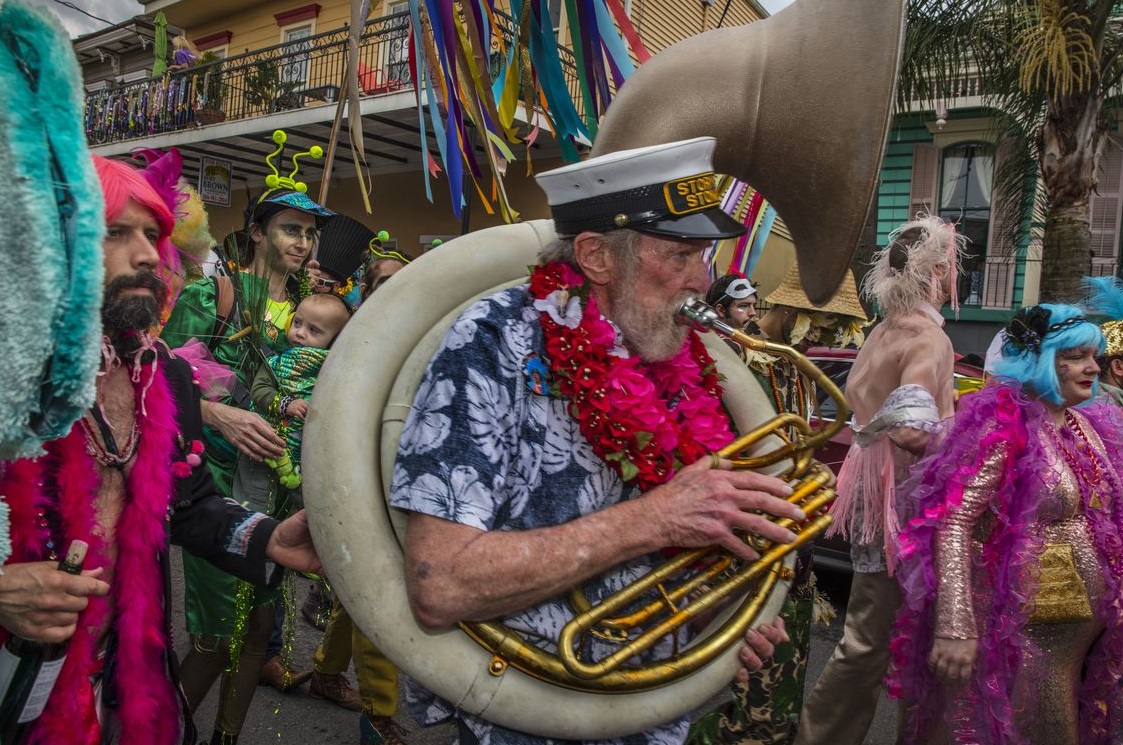

Historical Notes: Mardi Gras
Popular Mardi Gras Traditions
Mardi Gras Traditions You Need to Know About
Inside the Undiscovered Gay Mardi Gras
Video: Fabulous Gay Mardi Gras
Vintage Gay Mardi Gras Images
About Sydney Gay and Lesbian Mardi Gras
Homepage: Sydney
Gay and Lesbian Mardi Gras
Sydney: Welcome to Gay and Lesbian Mardi Gras
Over the
years, many more krewes were founded. It wasn't until
the 1950's, however, that the Mardi Gras we know today
came into fruition.
Probably as a result of the post-war baby boom, many
more carnival krewes were formed in the fifties and
sixties. Ask any local and they're bound to have fond
memories of riding on a float with their family. Mardi
Gras became a holiday for families to celebrate and
spend time with each other. Today, Mardi Gras remains a
time to gather with family and friends. In fact, people
are expected to open their homes to friends and family
if they live within walking distance of the parades.
In New Orleans, the more family oriented carnival has
moved into the suburb of Metairie. The rise in the
number of krewes and the population shift to the suburbs
has created, really, two distinct carnival traditions.
Parades roll in New Orleans and in Metairie. The parades
that roll in New Orleans are either "old line" krewes
like Rex, or what have come to be known as "superkrewes."
The "superkrewes" began in 1969 with the founding of
Bacchus - named for the god of wine. The city was
stunned by the enormous floats designed by Blaine Kern
(now a world famous designer of floats and other
ornaments). In addition, this krewe allowed anyone who
paid dues to be a member. It didn't matter if you could
trace your ancestry back to the buccaneers. The first
King of Bacchus broke the most serious tradition. The
King wasn't a community leader but Danny Kaye, a
Hollywood star.
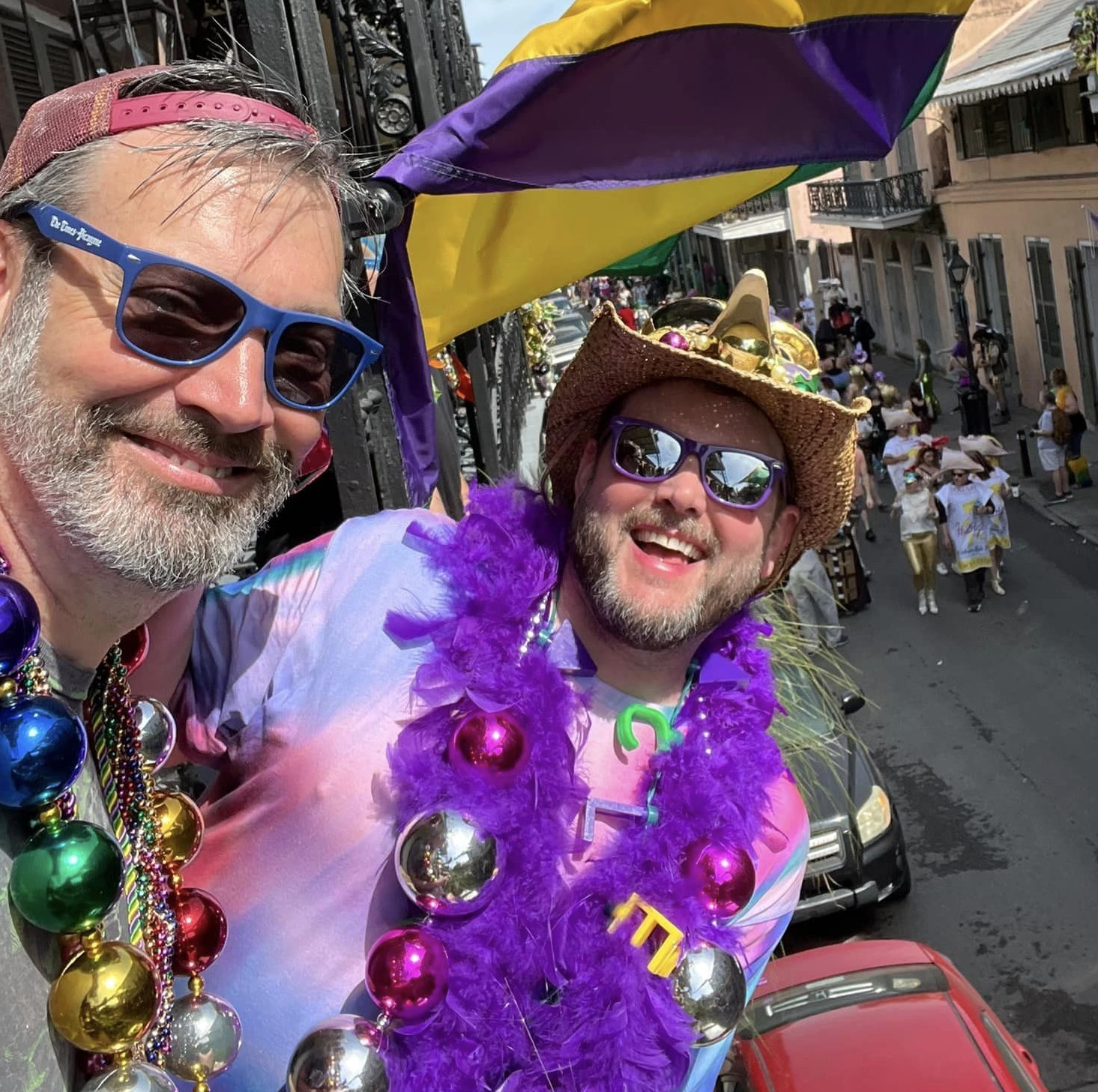
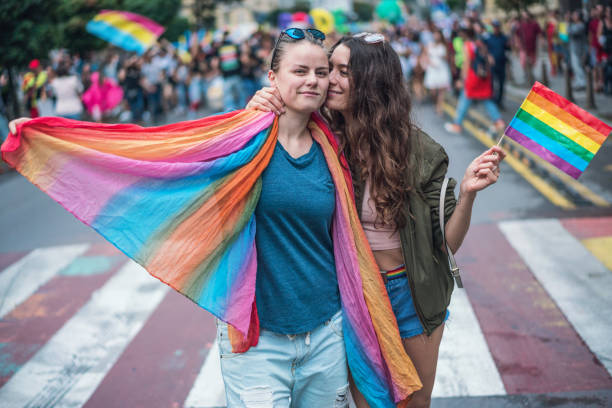

Today, Bacchus has become one of the largest and best
parades in New Orleans and rolls the Sunday before Mardi
Gras. Every year a different celebrity is made King and
rides a special float.
The founding of Bacchus started a new tradition. Soon
after the debut of this incredible parade, other
superkrewes were founded. Endymion, which rolls on the
Saturday night before Mardi Gras, was established in
1974. Endymion throws a party called the "Extravaganza"
and tickets to this event are cherished and hard to come
by. The Extravaganza is a party held in the Superdome
for some 10,000 people. Entertainment is provided by
some of the top names in the business. In 1995, the
1,500 member Krewe of Endymion introduced the largest
Mardi Gras float ever! With the theme Welcome To The New
Orleans Mardi Gras this float rolled with 150 maskers on
board.
In 1994, Harry Connick Jr., a national celebrity and New
Orleans native, began a new superkrewe called Orpheus
that rolls on Lundi Gras - the Monday before Fat
Tuesday. This Krewe has now become one of New Orleans
favorites. In Metairie, the krewes that parade are
usually groups of people that started clubs for their
families. The parades in Metairie have become more
sophisticated and larger over the years and some of them
rival the best New Orleans parade. However, most of the
parades in Metairie rent their floats and you tend to
see the same floats (modified a little) rolling night
after night. If you want to keep away from the rowdier
New Orleans crowd, Metairie is a nice alternative.
LGBTQ Mardi Gras
New Orleans: Home of Mardi
Gras
Guide to LGBTQ Mardi Gras
Travel Guide: New Orleans Gay Mardi Gras
Gay
Mardi Gras History
About Mardi Gras
Video: Celebrating Mardi Gras in New Orleans
Celebrating Mardi Gras
Mardi Gras Traditions
Historical Notes: Mardi Gras
Popular Mardi Gras Traditions
Mardi Gras Traditions You Need to Know About
Inside the Undiscovered Gay Mardi Gras
Video: Fabulous Gay Mardi Gras
Vintage Gay Mardi Gras Images
About Sydney Gay and Lesbian Mardi Gras
Homepage: Sydney
Gay and Lesbian Mardi Gras
Sydney: Welcome to Gay and Lesbian Mardi Gras
HOME
QUEER CAFE
│ LGBTQ Information Network │ Established 2017
|